Learn about brain health and nootropics to boost brain function
New Study Finds the Best Brain Exercises to Boost Memory
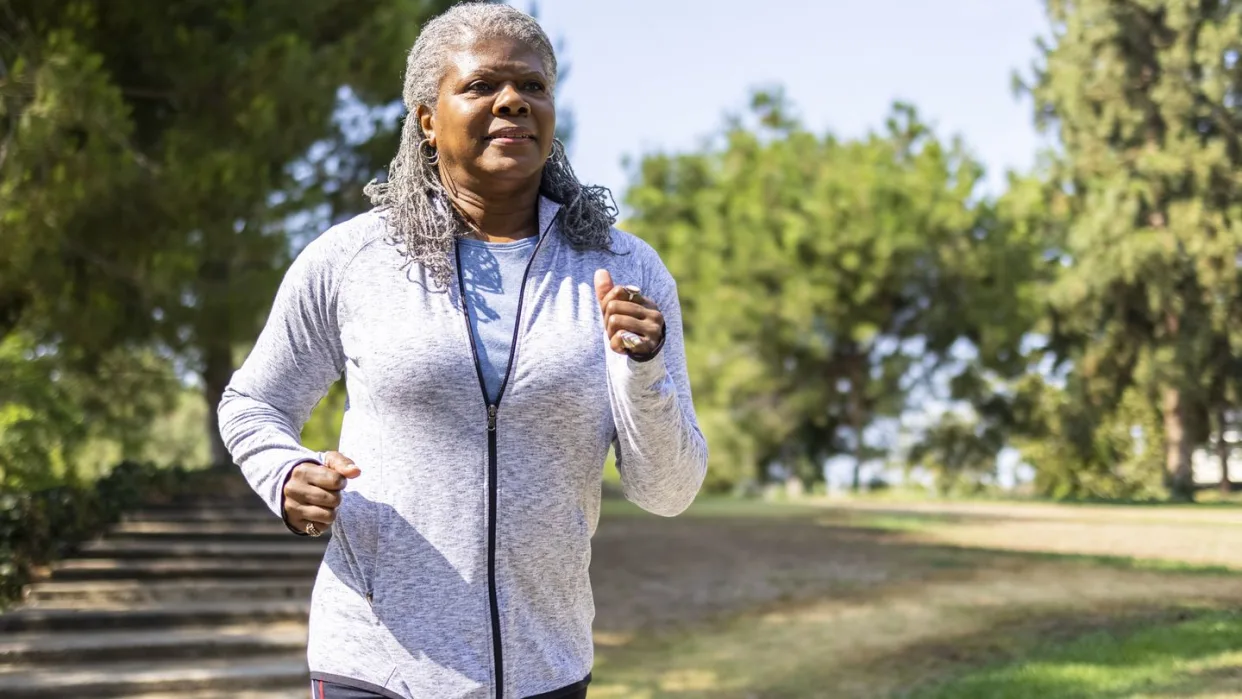
New Study Finds the Best Brain Exercises to Boost Memory Research has found exercise can have a positive impact on your memory and brain health.
A new study linked vigorous exercise to improved memory, planning, and organization.
Data suggests just 10 minutes a day can have a big impact.
Experts have known for years about the physical benefits of exercise, but research has been ongoing into how working out can impact your mind. Now, a new study reveals the best exercise for brain health—and it can help sharpen everything from your memory to your ability to get organized.
The study, which was published in the Journal of Epidemiology & Community Health , tracked data from nearly 4,500 people in the UK who had activity monitors strapped to their thighs for 24 hours a day over the course of a week. Researchers analyzed how their activity levels impacted their short-term memory, problem-solving skills, and ability to process things.
The study found that doing moderate and vigorous exercise and activities—even those that were done in under 10 minutes—were linked to much higher cognition scores than people who spent most of their time sitting, sleeping, or doing gentle activities. ( Vigorous exercise generally includes things like running, swimming, biking up an incline, and dancing; moderate exercise includes brisk walking and anything that gets your heart beating faster.)
The researchers specifically found that people who did these workouts had better working memory (the small amount of information that can be held in your mind and used in the execution of cognitive tasks) and that the biggest impact was on executive processes like planning and organization.
On the flip side: People who spent more time sleeping, sitting, or only moved a little in place of doing moderate to vigorous exercise had a 1% to 2% drop in cognition.
“Efforts should be made to preserve moderate and vigorous physical activity time, or reinforce it in place of other behaviors,” the researchers wrote in the conclusion.
But the study wasn’t perfect—it used previously collected cohort data, so the researchers didn’t know extensive details of the participants’ health or their long-term cognitive health. The findings “may simply be that those individuals who move more tend to have higher cognition on average,” says lead study author John Mitchell, a doctoral training student in the Institute of Sport, Exercise & Health at University College London. But, he adds, the findings could also “imply that even minimal changes to our daily lives can have downstream consequences for our cognition.”
So, why might there be a link between exercise and a good memory? Here’s what you need to know. Why might exercise sharpen your memory and thinking?
This isn’t the first study to find a link between exercise and enhanced cognition. In fact, the Centers for Disease Control and Prevention (CDC) specifically states online that physical activity can help improve your cognitive health, improving memory, emotional balance, and problem-solving.
Working out regularly can also lower your risk of cognitive decline and dementia. One scientific analysis of 128,925 people published in the journal Preventive Medicine in 2020 found that cognitive decline is almost twice as likely in adults who are inactive vs. their more active counterparts.
But, the “why” behind it all is “not entirely clear,” says Ryan Glatt, C.P.T. , senior brain health coach and director of the FitBrain Program at Pacific Neuroscience Institute in Santa Monica, CA. However, Glatt says, previous research suggests that “it is possible that different levels of activity may affect brain blood flow and cognition.” Meaning, exercising at a harder clip can stimulate blood flow to your brain and enhance your ability to think well in the process.
“It could relate to a variety of factors related to brain growth and skeletal muscle,” says Steven K. Malin, Ph.D., associate professor in the Department of Kinesiology and Health at Rutgers Robert Wood Johnson Medical School. “Often, studies show the more aerobically fit individuals are, the more dense brain tissue is, suggesting better connectivity of tissue and health.”
Exercise also activates skeletal muscles (the muscles that connect to your bones) that are thought to release hormones that communicate with your brain to influence the health and function of your neurons, i.e. cells that act as information messengers, Malin says. “This could, in turn, promote growth and regeneration of brain cells that assist with memory and cognition,” he says.
Currently, the CDC recommends that most adults get at least 150 minutes a week of moderate-intensity exercise. The best exercises for your memory
Overall, the CDC suggests doing the following to squeeze more exercise into your life to enhance your brain health: Dance
Do squats or march in place while watching TV
Start a walking routine
Use the stairs
Walk your dog, if you have one ( one study found that dog owners walk, on average, 22 minutes more every day than people who don’t own dogs)
However, the latest study suggests that more vigorous activities are really what’s best for your brain. The study didn’t pinpoint which exercises, in particular, are best—“when wearing an accelerometer, we do not know what sorts of activities individuals are doing,” Glatt points out. However, getting your heart rate up is key.
That can include doing exercises like: HIIT workouts
Running
Jogging Swimming Biking on an incline Dancing Malin’s advice: “Take breaks in sitting throughout the day by doing activity ‘snacks.’” That could mean doing a minute or two of jumping jacks, climbing stairs at a brisk pace, or doing air squats or push-ups to try to replace about six to 10 minutes of sedentary behavior a day. “Alternatively, trying to get walks in for about 10 minutes could go a long way,” he says. You Might Also Like
Scientists link growth hormone to anxiety and fear memory through specific neuron group

Growth hormone (GH) acts on many tissues throughout the body, helping build bones and muscles, among other functions. It is also a powerful anxiolytic. A study conducted by researchers at the University of São Paulo (USP) in Brazil has produced a deeper understanding of the role of GH in mitigating anxiety and, for the first time, identified the population of neurons responsible for modulating the influence of GH on the development of neuropsychiatric disorders involving anxiety, depression and post-traumatic stress. An article on the study is published in the Journal of Neuroscience .
In the study, which was supported by FAPESP, the researchers found that male mice lacking the GH receptor in a group of somatostatin-expressing neurons displayed increased anxiety. Somatostatin is a peptide that regulates several physiological processes, including the release of GH and other hormones, such as insulin.
On the other hand, they also found that the absence of the GH receptor in somatostatin-expressing neurons decreased fear memory, a key feature of post-traumatic stress disorder, in males and females. The discovery could contribute to the future development of novel classes of anxiolytic drug. Our discovery of the mechanism involving anxiolytic effects of GH offers a possible, merely chemical, explanation for these disorders, suggesting why patients with more or less GH secretion are more or less susceptible to them.” José Donato Júnior, last author of the article and professor at the university’s Biomedical Sciences Institute (ICB-USP) In the study, the researchers conducted three types of experiment involving mice (open field, elevated plus maze, and light/dark box) to test the animals’ capacity to explore the environment and take risks. “These are well-established experiments to analyze behavior similar to anxiety and memory of fear, which is an element in post-traumatic stress. As a result, we were able to explore the role of GH in these animals,” Donato explained.
The results of the study did not point to any reasons for the lack of increased anxiety-like behavior in female mice. “We believe it may be related to sexual dimorphism. We know the brain region containing the neurons we studied is a bit different in males and females. Some neurological disorders are also different in men and women, probably not by chance,” he said. Chemistry
Thousands of people suffer from neuropsychiatric disorders all over the world. Although anxiety and depression are the most common, their causes have yet to be fully elucidated. Scientists think they may be due to multiple factors, such as stress, genetics, social pressures, economic difficulties and/or gender issues, among others.
There is also growing evidence that hormones play an important role in regulating various neurological processes and influencing susceptibility to neuropsychiatric disorders. Alterations in levels of sex hormones such as estradiol affect anxiety, depression and fear memory in rodents and humans, for example. Preliminary results of other studies suggest that glucocorticoids (steroid hormones such as cortisol as well as synthetic forms such as prednisone and dexamethasone) may be involved in the development of neuropsychiatric disorders.
In the case of GH, the regulatory mechanism in neurons associated with such disorders had not yet been discovered. “We demonstrated that GH changes the synapses and structurally alters the neurons that secrete somatostatin,” Donato said.
The study also showed that anxiety, post-traumatic stress and fear memory are different facets of the same neuronal circuit. According to Donato, anxiety can be defined as excessive fear or distrust, while fear memory relates to an adverse past event that produced a brain alteration, which triggers an exacerbated response whenever the subject is exposed to a similar stimulus. This response may range from weeping to tremors and even paralysis.
“All this happens in the same neuron population, which expresses the GH receptor. In our experiment, fear memory was reduced in mice when we switched the GH receptor off. This means the capacity to form fear memory is impaired. It may be the case that GH contributes to the development of post-traumatic stress,” he said.
Another type of evidence for this is that chronic stress raises the level of a hormone called ghrelin, a powerful trigger of GH secretion. “The role of ghrelin in post-traumatic stress has been studied for some time. Research has shown that ghrelin-induced GH secretion increases in chronic stress, favoring the development of fear memory and post-traumatic stress in the animal’s brain,” he said. How GH affects neurological disorders
In humans, GH is secreted by the pituitary gland into the bloodstream, promoting tissue growth throughout the body by means of protein formation, cell multiplication and cell differentiation. GH is indispensable during childhood, adolescence and pregnancy, when its secretion peaks. In old age, it naturally declines.
GH deficiency can lead to dwarfism, which is mostly manifested from 2 years of age, preventing growth during childhood and adolescence. “Previous research involving patients with GH deficiency showed a higher prevalence of anxiety and depression in these individuals, but the cause hadn’t yet been established. Some authors blame it on problems of self-image and bullying due to short stature,” Donato said.
The study involving mice demonstrated the key role played by GH in these disorders without the presence of potential confounders such as body image issues. “We were able to find out how much is due directly to the effects of GH or the indirect effects of growth deficit. Because we were able to identify the mechanism involving GH, we know it’s a direct cause of anxiety disorder, and this knowledge can facilitate the development of therapies,” Donato said.
Next steps for the research group include an investigation of the role played by GH during pregnancy. “We know one of the peaks in GH production occurs during pregnancy. We also know that the prevalence of depression rises in this period owing to post-partum depression. Of course, these disorders also reflect social, economic and other kinds of pressure, but we mustn’t forget that the rise in hormone secretion during and after pregnancy can dysregulate brain functioning, also leading to this kind of mental illness,” he said.
Source:
São Paulo Research Foundation (FAPESP)
Journal reference:
dos Santos, W. O., et al. (2023). […]
Exploring fear engrams to shed light on physical manifestation of memory in the brain
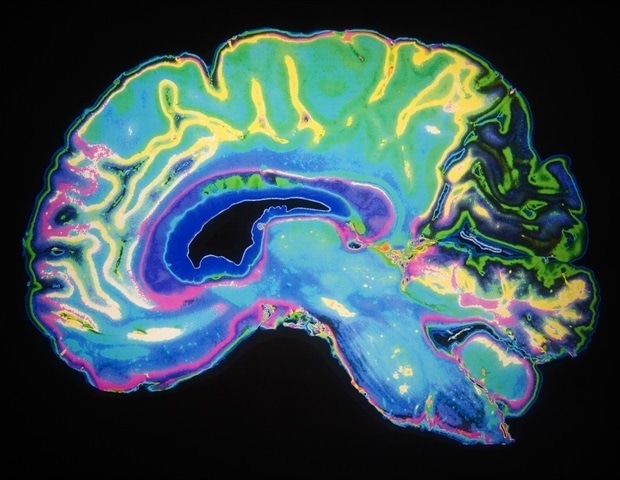
In a world grappling with the complexities of mental health conditions like anxiety, depression, and PTSD, new research from Boston University neuroscientist Dr. Steve Ramirez and collaborators offers a unique perspective. The study, recently published in the Journal of Neuroscience , delves into the intricate relationship between fear memories, brain function, and behavioral responses. Dr. Ramirez, along with his co-authors Kaitlyn Dorst, Ryan Senne, Anh Diep, Antje de Boer, Rebecca Suthard, Heloise Leblanc, Evan Ruesch, Sara Skelton, Olivia McKissick, and John Bladon, explore the elusive concept of fear engrams, shedding light on the physical manifestation of memory in the brain. As Ramirez emphasizes, the initiative was led by Dorst and Senne, with the project serving as the cornerstone of Dorst’s PhD.
Beyond its implications for neuroscience, their research marks significant strides in understanding memory formation and holds promise for advancing our comprehension of various behavioral responses in different situations, with potential applications in the realm of mental health. In this Q&A, Dr. Ramirez discusses the motivations, challenges, and key findings of the study. What motivated you and your research collaborators to study the influence of fear memories on behavior in different environments?
The first thing is that with fear memories, it’s one of the most, if not the most, most studied kind of memory in rodents. It’s something that gives us a quantitative, measurable behavioral readout. So when an animal’s in a fearful state, we can begin looking at how its behavior has changed and mark those changes in behavior as like an index of fear. Fear memories in particular are our point because they lead to some stereotyped behaviors in animals such as freezing in place, which is one of many ways that fear manifests behaviorally in rodents..
So that’s one angle. The second angle being that fear is such a core component of a variety of pathological states in the brain. So including probably especially PTSD, but also including generalized anxiety, for instance, and even certain components of depression for that matter. So there’s a very direct link between a fear memory and its capacity to evolve or devolve in a sense into a pathological state such as PTSD. It gives us a window into what’s going on in those instances as well. We studied fear because we can measure it predictably in rodents, and it has direct translational relevance in disorders involving dysregulated fear responses as well. Can you explain what fear engrams are and how you used optogenetics to reactivate them in the hippocampus?
An engram is this elusive term that generally means the physical manifestation of memory. So, whatever memory’s physical identity is in the brain, that’s what we term an engram. The overall architecture in the brain that supports the building that is memory. I say elusive because we don’t really know what memory fully looks like in the brain. And we definitely don’t know what an engram looks like. But, we do have tips of the iceberg kind of hints that for the past decade, we’ve been able to really use a lot of cutting edge tools in neuroscience to study.
In our lab, we’ve made a lot of headway in visualizing the physical substrates of memories in the brain. For instance, we know that there’s cells throughout the brain. It’s a 3D phenomenon distributed throughout the brain but there’s cells throughout the brain that are involved in the formation of a given memory such as a fear memory and that there’s areas of the brain that are particularly active during the formation of a memory. What were the main findings about freezing behavior in smaller versus larger environments during fear memory reactivation?
It’s thankfully straightforward and science is often anything but. First, if we reactivate this fear memory when the animals are in a small environment, then they’ll default to freezing–they stay in place. This is presumably an adaptive response so as to avoid detection by a potential threat. We think the brain has done the calculus of, can I escape this environment? Perhaps not. Let me sit in a corner and be vigilant and try to detect any potential threats. Thus, the behavior manifests as freezing.
The neat part is that in that same animal, if we reactivate the exact same cells that led to freezing in the small environment, everything is the exact same: the cells that we’re activating, the fear memory that it corresponds to, the works. But, if we do that in a large environment, then it all goes away. The animals don’t freeze anymore. If anything, a different repertoire of behaviors emerge. Basically, they start doing other things that is just not freezing, and that was the initial take home for us, was that they, when we reactivate the fear memory up, or artificially, when we do that in the small environment, they freeze, when we do that in the large environment, they don’t freeze.
What was cool for us about that finding in particular was that it means that these fear memory cells are not hardwired to produce the same exact response every single time they’re reactivated. At some point, the brain determines, “I’m recalling a fear memory and now I have to figure out what’s the most adaptive response.” Were there any challenges or obstacles you encountered during the research process, and how did you overcome them?
There’s a couple. The first is that the behavior, ironically enough, was reasonably straightforward for us to reproduce and to do again and again and again–so that we were convinced that there was some element of truth there. In the second half of the study, and the one that probably takes up the most space in the paper, was figuring out what in the brain is mediating this difference. As we observed, the animals are freezing when we artificially activate a memory in a small environment, and they’re not freezing in the large environment. But, we’re activating the same cells. So, what is different about the animal’s brain […]
Think you’re good at multi-tasking? Here’s how your brain compensates – and how this changes with age
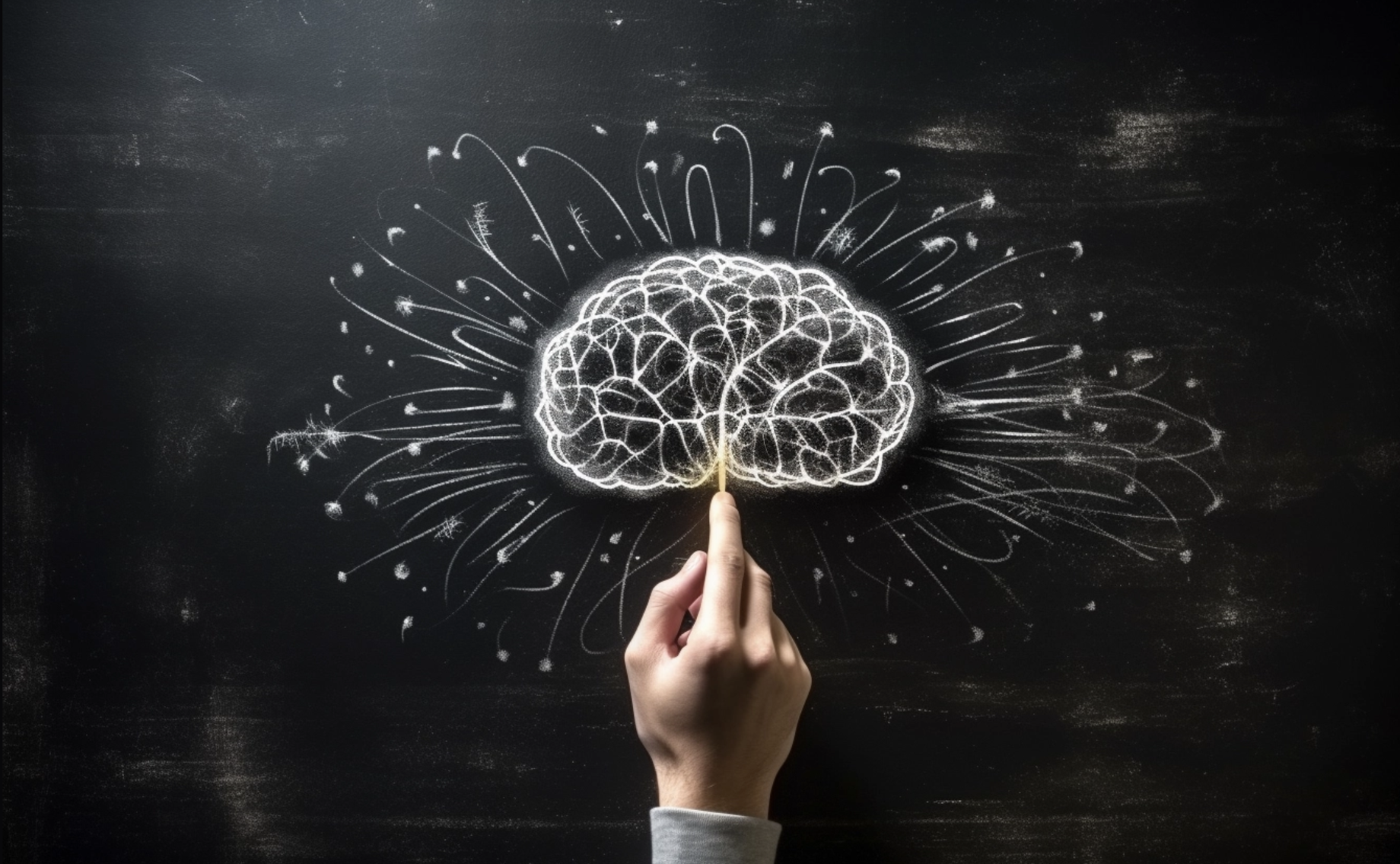
This means better capacity to maintain performance at or near single-task levels.The white matter tract that connects our two hemispheres the corpus callosum also takes a long time to fully mature, placing limits on how well children can walk around and do manual tasks like texting on a phone together.For a child or adult with motor skill difficulties, or developmental coordination disorder, multi-tastking errors are more common.
Representative Image Country:
Australia
SHARE
We’re all time-poor, so multi-tasking is seen as a necessity of modern living. We answer work emails while watching TV, make shopping lists in meetings and listen to podcasts when doing the dishes. We attempt to split our attention countless times a day when juggling both mundane and important tasks.
But doing two things at the same time isn’t always as productive or safe as focusing on one thing at a time.
The dilemma with multi-tasking is that when tasks become complex or energy-demanding, like driving a car while talking on the phone, our performance often drops on one or both.
Here’s why – and how our ability to multi-task changes as we age.
Doing more things, but less effectively The issue with multi-tasking at a brain level, is that two tasks performed at the same time often compete for common neural pathways – like two intersecting streams of traffic on a road.
In particular, the brain’s planning centres in the frontal cortex (and connections to parieto-cerebellar system, among others) are needed for both motor and cognitive tasks. The more tasks rely on the same sensory system, like vision, the greater the interference.
This is why multi-tasking, such as talking on the phone, while driving can be risky. It takes longer to react to critical events, such as a car braking suddenly, and you have a higher risk of missing critical signals, such as a red light.
The more involved the phone conversation, the higher the accident risk, even when talking “hands-free”.
Generally, the more skilled you are on a primary motor task, the better able you are to juggle another task at the same time. Skilled surgeons, for example, can multitask more effectively than residents, which is reassuring in a busy operating suite.
Highly automated skills and efficient brain processes mean greater flexibility when multi-tasking.
Adults are better at multi-tasking than kids Both brain capacity and experience endow adults with a greater capacity for multi-tasking compared with children.
You may have noticed that when you start thinking about a problem, you walk more slowly, and sometimes to a standstill if deep in thought. The ability to walk and think at the same time gets better over childhood and adolescence, as do other types of multi-tasking.
When children do these two things at once, their walking speed and smoothness both wane, particularly when also doing a memory task (like recalling a sequence of numbers), verbal fluency task (like naming animals) or a fine-motor task (like buttoning up a shirt). Alternately, outside the lab, the cognitive task might fall by wayside as the motor goal takes precedence.
Brain maturation has a lot to do with these age differences. A larger prefrontal cortex helps share cognitive resources between tasks, thereby reducing the costs. This means better capacity to maintain performance at or near single-task levels.
The white matter tract that connects our two hemispheres (the corpus callosum) also takes a long time to fully mature, placing limits on how well children can walk around and do manual tasks (like texting on a phone) together.
For a child or adult with motor skill difficulties, or developmental coordination disorder, multi-tastking errors are more common. Simply standing still while solving a visual task (like judging which of two lines is longer) is hard. When walking, it takes much longer to complete a path if it also involves cognitive effort along the way. So you can imagine how difficult walking to school could be.
What about as we approach older age? Older adults are more prone to multi-tasking errors. When walking, for example, adding another task generally means older adults walk much slower and with less fluid movement than younger adults.
These age differences are even more pronounced when obstacles must be avoided or the path is winding or uneven.
Older adults tend to enlist more of their prefrontal cortex when walking and, especially, when multi-tasking. This creates more interference when the same brain networks are also enlisted to perform a cognitive task.
These age differences in performance of multi-tasking might be more “compensatory” than anything else, allowing older adults more time and safety when negotiating events around them.
Older people can practise and improve Testing multi-tasking capabilities can tell clinicians about an older patient’s risk of future falls better than an assessment of walking alone, even for healthy people living in the community.
Testing can be as simple as asking someone to walk a path while either mentally subtracting by sevens, carrying a cup and saucer, or balancing a ball on a tray.Patients can then practise and improve these abilities by, for example, pedalling an exercise bike or walking on a treadmill while composing a poem, making a shopping list, or playing a word game.The goal is for patients to be able to divide their attention more efficiently across two tasks and to ignore distractions, improving speed and balance.There are times when we do think better when moving Let’s not forget that a good walk can help unclutter our mind and promote creative thought. And, some research shows walking can improve our ability to search and respond to visual events in the environment.But often, it’s better to focus on one thing at a time We often overlook the emotional and energy costs of multi-tasking when time-pressured. In many areas of life – home, work and school – we think it will save us time and energy. But the reality can be different.Multi-tasking can sometimes sap our reserves and create stress, raising our cortisol levels, especially when we’re time-pressured. If such performance is sustained over long periods, it can leave you feeling fatigued or just plain empty.Deep thinking is energy demanding by itself and […]
Mind Control Breakthrough: Caltech’s Pioneering Ultrasound Brain–Machine Interface
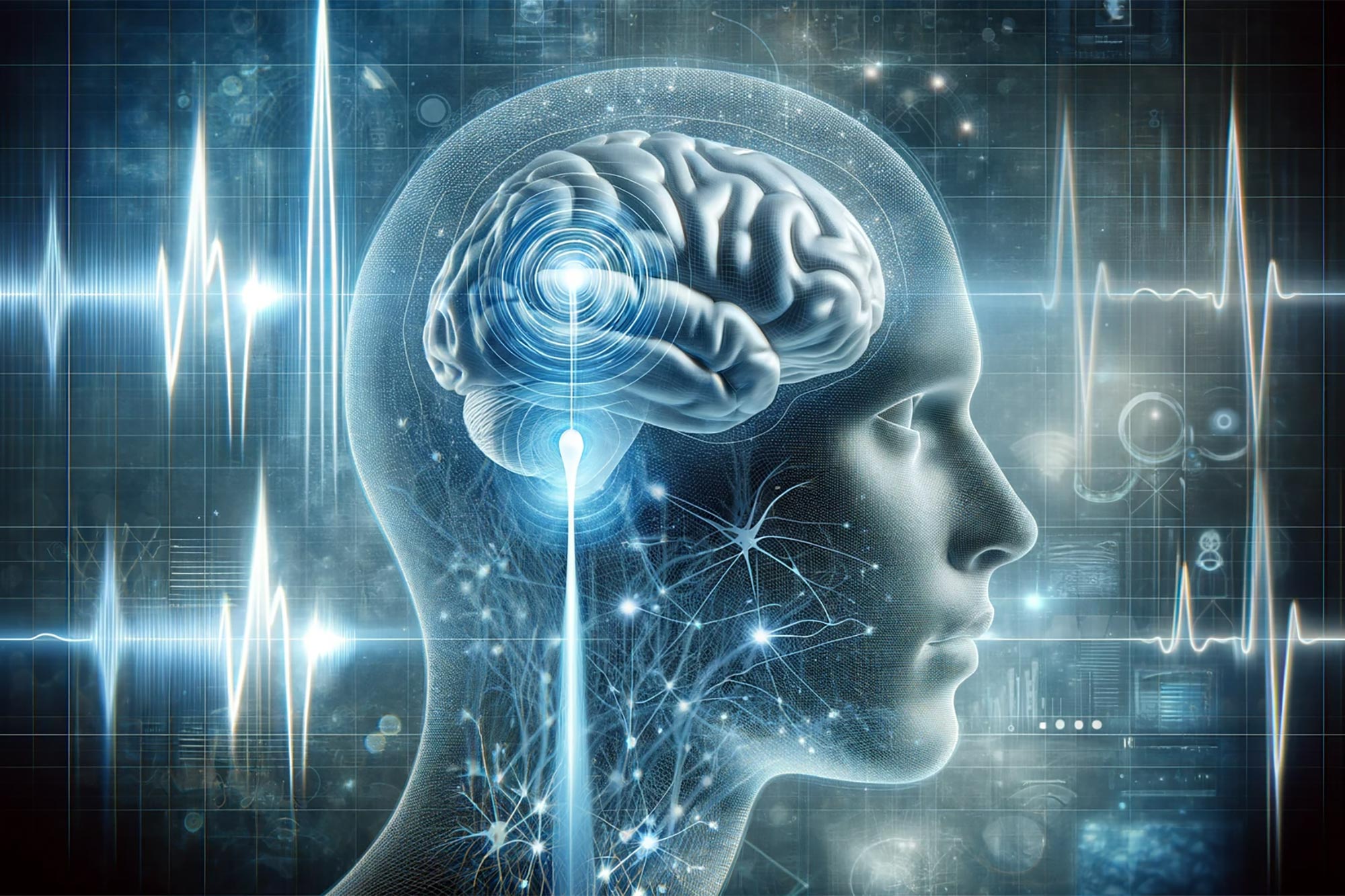
The latest advancements in Brain-Machine Interfaces feature functional ultrasound (fUS), a non-invasive technique for reading brain activity. This innovation has shown promising results in controlling devices with minimal delay and without the need for frequent recalibration. Credit: SciTechDaily.com Functional ultrasound (fUS) marks a significant leap in Brain-Machine Interface technology, offering a less invasive method for precise control of electronic devices by interpreting brain activity.
Brain–machine interfaces (BMIs) are devices that can read brain activity and translate that activity to control an electronic device like a prosthetic arm or computer cursor. They promise to enable people with paralysis to move prosthetic devices with their thoughts.
Many BMIs require invasive surgeries to implant electrodes into the brain in order to read neural activity. However, in 2021 , Caltech researchers developed a way to read brain activity using functional ultrasound (fUS), a much less invasive technique. Functional Ultrasound: A Game Changer for BMIs
Now, a new study is a proof-of-concept that fUS technology can be the basis for an “online” BMI—one that reads brain activity, deciphers its meaning with decoders programmed with machine learning, and consequently controls a computer that can accurately predict movement with very minimal delay time. Ultrasound is used to image two-dimensional sheets of the brain, which can then be stacked together to create a 3-D image. Credit: Courtesy of W. Griggs The study was conducted in the Caltech laboratories of Richard Andersen, James G. Boswell Professor of Neuroscience and director and leadership chair of the T&C Chen Brain–Machine Interface Center ; and Mikhail Shapiro, Max Delbrück Professor of Chemical Engineering and Medical Engineering and Howard Hughes Medical Institute Investigator. The work was a collaboration with the laboratory of Mickael Tanter, director of physics for medicine at INSERM in Paris, France. Advantages of Functional Ultrasound
“Functional ultrasound is a completely new modality to add to the toolbox of brain–machine interfaces that can assist people with paralysis,” says Andersen. “It offers attractive options of being less invasive than brain implants and does not require constant recalibration. This technology was developed as a truly collaborative effort that could not be accomplished by one lab alone.”
“In general, all tools for measuring brain activity have benefits and drawbacks,” says Sumner Norman, former senior postdoctoral scholar research associate at Caltech and a co-first author on the study. “While electrodes can very precisely measure the activity of single neurons, they require implantation into the brain itself and are difficult to scale to more than a few small brain regions. Non-invasive techniques also come with tradeoffs. Functional magnetic resonance imaging [fMRI] provides whole-brain access but is restricted by limited sensitivity and resolution. Portable methods, like electroencephalography [EEG] are hampered by poor signal quality and an inability to localize deep brain function.” The vasculature of the posterior parietal cortex as measured by functional ultrasound neuroimaging. Credit: Courtesy of W. Griggs Ultrasound Imaging Explained
Ultrasound imaging works by emitting pulses of high-frequency sound and measuring how those sound vibrations echo throughout a substance, such as various tissues of the human body. Sound waves travel at different speeds through these tissue types and reflect at the boundaries between them. This technique is commonly used to take images of a fetus in utero , and for other diagnostic imaging.
Because the skull itself is not permeable to sound waves, using ultrasound for brain imaging requires a transparent “window” to be installed into the skull. “Importantly, ultrasound technology does not need to be implanted into the brain itself,” says Whitney Griggs (PhD ’23), a co-first author on the study. “This significantly reduces the chance for infection and leaves the brain tissue and its protective dura perfectly intact.”
“As neurons’ activity changes, so does their use of metabolic resources like oxygen,” says Norman. “Those resources are resupplied through the blood stream, which is the key to functional ultrasound.” In this study, the researchers used ultrasound to measure changes in blood flow to specific brain regions. In the same way that the sound of an ambulance siren changes in pitch as it moves closer and then farther away from you, red blood cells will increase the pitch of the reflected ultrasound waves as they approach the source and decrease the pitch as they flow away. Measuring this Doppler-effect phenomenon allowed the researchers to record tiny changes in the brain’s blood flow down to spatial regions just 100 micrometers wide, about the width of a human hair. This enabled them to simultaneously measure the activity of tiny neural populations, some as small as just 60 neurons, widely throughout the brain. Unlocking Movement: Helping Paralyzed People Use Thought to Control Computers and Robotic Limbs Innovative Application in Non-Human Primates
The researchers used functional ultrasound to measure brain activity from the posterior parietal cortex (PPC) of non-human primates, a region that governs the planning of movements and contributes to their execution. The region has been studied by the Andersen lab for decades using other techniques.
The animals were taught two tasks, requiring them to either plan to move their hand to direct a cursor on a screen, or plan to move their eyes to look at a specific part of the screen. They only needed to think about performing the task, not actually move their eyes or hands, as the BMI read the planning activity in their PPC.
“I remember how impressive it was when this kind of predictive decoding worked with electrodes two decades ago, and it’s amazing now to see it work with a much less invasive method like ultrasound,” says Shapiro. Promising Results and Future Plans
The ultrasound data was sent in real-time to a decoder (previously trained to decode the meaning of that data using machine learning), and subsequently generated control signals to move a cursor to where the animal intended it to go. The BMI was able to successfully do this to eight radial targets with mean errors of less than 40 degrees.
“It’s significant that the technique does not require the BMI to be recalibrated each day, unlike other BMIs,” says Griggs. “As an analogy, imagine […]
All Your Brain Wants For Christmas Are 12 Tools For Career Success
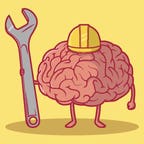
You have the most scientific and innovative tools yet to rewire your brain for success in 2024. What are you giving your brain for Christmas and the New Year? That might sound like a silly question, and you could be rolling your eyes, but I haven’t been sampling the Christmas cheer. Neuroscientists tell us that the brain needs certain things to perform at its best. After all, your brain is your best friend. It’s with you 24/7, and never leaves your side (or I should say your head). The truth of the matter is that you can’t have optimal career success if you ignore your sidekick. The good news is that as we approach the new year, modern neuroscience has developed imaging techniques to advance our understanding of how to nurture our brain for optimal success. So don’t be a Christmas Scrooge. Take advantage of the latest science-backed tools and give your brain the twelve best gifts of the holiday season. What Your Brain Wants Under The Tree
If your brain could speak, it would tell you that it likes and requires certain things to perform at its best. You can’t be successful without it, so it only makes sense to nourish it with the things it likes. Consider the following actions as tools that will give it what it needs for optimal performance.
-1. Green time to offset screen time. Brain scans of people who spend time outdoors have more gray matter in the prefrontal cortex and a stronger ability to think clearly and to self-regulate their emotions.
-2. Blood flow . Movement and physical exercise feeds your brain the excess blood flow it needs to slow the onset of memory loss and dementia.
-3. Safety. Your brain requires psychological safety to focus on work tasks. Under fear—such as an overbearing boss—your brain focuses on how to avoid the threat, distracting you from engaging and producing work tasks.
-4. Music. The brain loves music. Repeated listening to meaningful music cultivates beneficial brain plasticity improving memory and performance. Wearing earpods and listening to your favorite music while working enhances engagement and productivity.
MORE FOR YOU Your Working Career Will Span 25 Years Or More Why Adopting An Entrepreneurial Mindset Might Just Set You Free
9 Personal Branding Trends For 2024 Your Blueprint For Career Success
-5. Ample sleep. Your brain gets annoyed when it doesn’t get the rest it needs. But ample sleep restores clarity and performance by actively refining cortical plasticity to help you manage job stress.
CEO: C-suite news, analysis, and advice for top decision makers right to your inbox.
By signing up, you accept and agree to our Terms of Service (including the class action waiver and arbitration provisions), and Privacy Statement .
-6. Novelty. Your brain likes the creative mojo that comes from trying new things. Novelty promotes adaptive learning by resetting key brain circuits and enhances your ability to update new ideas and consolidate them into existing neurological frameworks.
-7. Social connections. People who volunteer, attend classes or get together with friends at least once a week have healthier brains in the form of more robust gray matter and less cognitive decline.
-8. Broad perspective. A broad perspective allows your brain to build on the positive aspects of your career and see future possibilities, so it wants you to keep the big picture in mind.
-9. Microbreaks. Short breaks of five minutes—when you meditate, deep breathe, stretch or gaze out the window—throughout your workday mitigate decision fatigue, enhance energy and reset your brain.
-10. Brain foods. Proteins—such as meats, poultry, dairy, cheese and eggs—give your brain the amino acids it needs to create neurotransmitter pathways. Omega-3 fatty acids such as salmon, mackerel, tuna and sardines put your brain in a good mood. It likes vitamin B in eggs, whole grains, fish, avocados and citrus fruits.
-11. Brain fitness. Keeping the brain fit—with challenges such as puzzles, reading or learning a new skill—slows cognitive decline and prevents degenerative disorders.
-12. Resolved arguments. Scientists discovered that when you resolve an argument by day’s end, it significantly reduces brain stress. Your Brain Wants Order, Not Chaos, During The Holiday
The best gift you can give your brain this holiday season is order instead of chaos. You can find tips on how to mitigate holiday stress here . But at some point, you probably will have to perform several activities at once. If multitasking becomes a pattern, it can backfire. When you bounce between several job tasks at once, you’re forcing your brain to keep refocusing with each rebound and reducing productivity by up to 40%. Multitasking undermines productivity and neutralizes efficiency, overwhelming your brain and causing fractured thinking, lack of concentration and decision fatigue.
According to Ben Ahrens, neuroscience researcher and CEO of the neuroplasticity program re-origin , the research is clear that multitasking and context-switching come at a cognitive cost. He says it not only takes its toll on neurotransmitters such as dopamine, our “feel good” hormone that keeps us motivated and focused so we can close the tab on a challenging project, but our brains are not wired to adapt to long-term stress positively.
In neuroscience, Ahrens states, the most important thing we can do to reduce stress is to give the brain order. When we’re overwhelmed with decision-making, the brain moves back and forth between the central executive network and the default mode network, he explains. Rather than let our brains activate the default mode network— which is when we’re operating on autopilot and mulling over everything we have to do rather than doing it—there are tools we can use to activate the central executive network and bring order to the brain.
> Use 3 x 3 to simplify your goals: The brain likes to think in threes, so aim to have no more than three goals per week and three smaller goals each day to set realistic expectations.
Focus on the one thing to get the ball rolling. If you need help figuring out where to start, focus on the one thing that, once completed, will make […]
Brain Health Doesn’t Have to Make You Puzzled
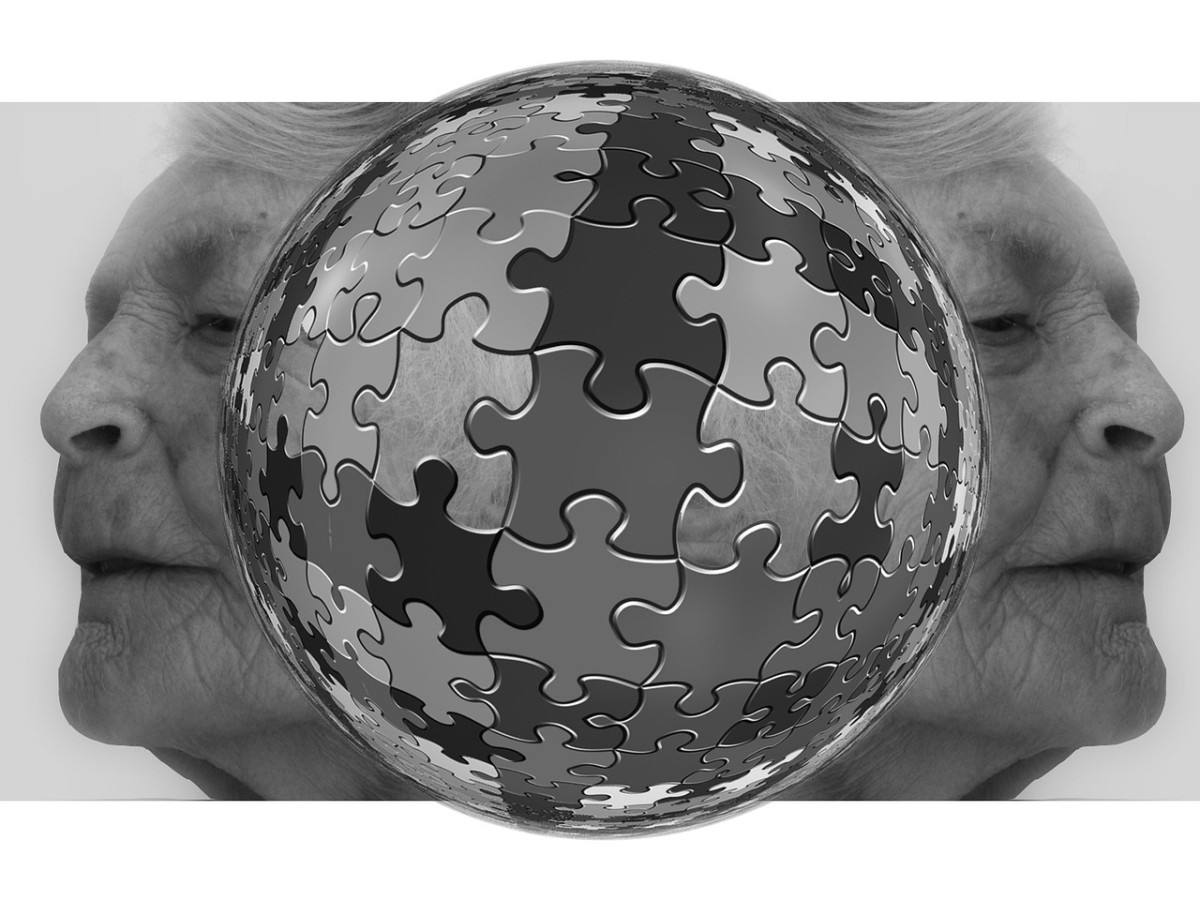
If you’re like most of us, as we age, you’re looking for ways to improve your focus and concentration. There is an awareness, whether in the news or talk among friends about memory problems like dementia and Alzheimers. You may even find yourself “checking in” to make sure that you are not forgetting things. You may also start to notice brain fog and problems concentrating. Is this age related or something we fix? Concentration and memory
When I was younger, I never had to worry about my concentration or memory. If I had to take a test, I was always sharp. Somewhere along the line (I have forgotten when) I started to lose some of that sharp, quick mind. I have days when I battle a bit of “fog”. I notice that I struggle to stay focused on a project. Natural alternatives
Thankfully, there are natural alternatives that can be effective without the negative side effects of prescriptions. Let’s take a look at amino acids for brain health. So, we’re not focusing here on HOW we lose concentration due to poor diet or exposure to disruptors but instead, focusing on natural ways to support the brain. Amino acids
Amino acids are the building blocks of protein. They are essential for muscle growth, immune system function, and cognitive function. There are 20 different amino acids that the body needs in order to function properly. 11 of these amino acids can be produced by the body, while the other 9 must be obtained through food or supplements. Let’s focus on 3 that have been shown to be beneficial for brain function: tyrosine, glutamine, and choline. Please note that many other foods and supplements can be helpful. Tyrosine
Tyrosine supplementation may help increase your dopamine levels, neurotransmitters, adrenalin and norepinephrine. Some call it a “brain-booster” because it may help increase alertness and improve cognitive performance. It is being studied to see if it helps with depression. The FDA recognizes it as safe for most but it could react with other medications. Glutamine
Glutamine is the most abundant amino acid in our bodies so why would we need to supplement? Research shows that when the body is stressed due to illness or injury, it can be responsible for shorter hospital stays. It helps protect the brain from stress-related damage and increases white blood cells that help fight infection and disease. Dr Axe states that it can stall brain aging. Choline
Choline is important for memory and learning. A study was done on inadequate levels of choline and found that lower levels of choline meant lower working memory performance in older men. It also may lower the risk of stroke and boost metabolism.
There are numerous ways that the brain can become foggy and memory can be disrupted and there are numerous ways to support brain health. If you’re looking for a way to improve your focus and concentration without resorting to prescription drugs, consult with your doctor and discuss taking amino acids to stay focused naturally.
New brain-like transistor mimics human intelligence
Taking inspiration from the human brain, researchers have developed a new synaptic transistor capable of higher-level thinking.
Designed by researchers at Northwestern University, Boston College and the Massachusetts Institute of Technology (MIT), the device simultaneously processes and stores information just like the human brain. In new experiments, the researchers demonstrated that the transistor goes beyond simple machine-learning tasks to categorize data and is capable of performing associative learning.
Although previous studies have leveraged similar strategies to develop brain-like computing devices, those transistors cannot function outside cryogenic temperatures. The new device, by contrast, is stable at room temperatures. It also operates at fast speeds, consumes very little energy and retains stored information even when power is removed, making it ideal for real-world applications.
The study will be published on Wednesday (Dec. 20) in the journal Nature .
“The brain has a fundamentally different architecture than a digital computer,” said Northwestern’s Mark C. Hersam, who co-led the research. “In a digital computer, data move back and forth between a microprocessor and memory, which consumes a lot of energy and creates a bottleneck when attempting to perform multiple tasks at the same time. On the other hand, in the brain, memory and information processing are co-located and fully integrated, resulting in orders of magnitude higher energy efficiency. Our synaptic transistor similarly achieves concurrent memory and information processing functionality to more faithfully mimic the brain.”
Hersam is the Walter P. Murphy Professor of Materials Science and Engineering at Northwestern’s McCormick School of Engineering. He also is chair of the department of materials science and engineering, director of the Materials Research Science and Engineering Center and member of the International Institute for Nanotechnology. Hersam co-led the research with Qiong Ma of Boston College and Pablo Jarillo-Herrero of MIT.
Recent advances in artificial intelligence (AI) have motivated researchers to develop computers that operate more like the human brain. Conventional, digital computing systems have separate processing and storage units, causing data-intensive tasks to devour large amounts of energy. With smart devices continuously collecting vast quantities of data, researchers are scrambling to uncover new ways to process it all without consuming an increasing amount of power. Currently, the memory resistor, or “memristor,” is the most well-developed technology that can perform combined processing and memory function. But memristors still suffer from energy costly switching.
“For several decades, the paradigm in electronics has been to build everything out of transistors and use the same silicon architecture,” Hersam said. “Significant progress has been made by simply packing more and more transistors into integrated circuits. You cannot deny the success of that strategy, but it comes at the cost of high power consumption, especially in the current era of big data where digital computing is on track to overwhelm the grid. We have to rethink computing hardware, especially for AI and machine-learning tasks.”
To rethink this paradigm, Hersam and his team explored new advances in the physics of moiré patterns, a type of geometrical design that arises when two patterns are layered on top of one another. When two-dimensional materials are stacked, new properties emerge that do not exist in one layer alone. And when those layers are twisted to form a moiré pattern, unprecedented tunability of electronic properties becomes possible.
For the new device, the researchers combined two different types of atomically thin materials: bilayer graphene and hexagonal boron nitride. When stacked and purposefully twisted, the materials formed a moiré pattern. By rotating one layer relative to the other, the researchers could achieve different electronic properties in each graphene layer even though they are separated by only atomic-scale dimensions. With the right choice of twist, researchers harnessed moiré physics for neuromorphic functionality at room temperature.
“With twist as a new design parameter, the number of permutations is vast,” Hersam said. “Graphene and hexagonal boron nitride are very similar structurally but just different enough that you get exceptionally strong moiré effects.”
To test the transistor, Hersam and his team trained it to recognize similar — but not identical — patterns. Just earlier this month, Hersam introduced a new nanoelectronic device capable of analyzing and categorizing data in an energy-efficient manner, but his new synaptic transistor takes machine learning and AI one leap further.
“If AI is meant to mimic human thought, one of the lowest-level tasks would be to classify data, which is simply sorting into bins,” Hersam said. “Our goal is to advance AI technology in the direction of higher-level thinking. Real-world conditions are often more complicated than current AI algorithms can handle, so we tested our new devices under more complicated conditions to verify their advanced capabilities.”
First the researchers showed the device one pattern: 000 (three zeros in a row). Then, they asked the AI to identify similar patterns, such as 111 or 101. “If we trained it to detect 000 and then gave it 111 and 101, it knows 111 is more similar to 000 than 101,” Hersam explained. “000 and 111 are not exactly the same, but both are three digits in a row. Recognizing that similarity is a higher-level form of cognition known as associative learning.”
In experiments, the new synaptic transistor successfully recognized similar patterns, displaying its associative memory. Even when the researchers threw curveballs — like giving it incomplete patterns — it still successfully demonstrated associative learning.
“Current AI can be easy to confuse, which can cause major problems in certain contexts,” Hersam said. “Imagine if you are using a self-driving vehicle, and the weather conditions deteriorate. The vehicle might not be able to interpret the more complicated sensor data as well as a human driver could. But even when we gave our transistor imperfect input, it could still identify the correct response.”
The study, “Moiré synaptic transistor with room-temperature neuromorphic functionality,” was primarily supported by the National Science Foundation. RELATED TOPICS
RELATED TERMS Virtual reality
Cognition
Neural network
Circadian rhythm
Data mining
Methamphetamine
Computer vision
Learning disability
Story Source: Materials provided by Northwestern University . Original written by Amanda Morris. Note: Content may be edited for style and […]
Board Games: Fun and Potentially Good for the MS Brain
As winter nights close in, friends and family gather to wait out the dark and cold. These are often the times we might think of breaking out an old favorite board game.
Well, now we have another reason beyond passing the time: Turns out, board games can be good for us! Games Improved Memory, Depression, and More
Frederico Emanuele Pozzi, MD , a neurology resident at Fondazione IRCCS San Gerardo dei Tintori in Monza, Italy, and a group of his colleagues recently presented evidence that playing board games has many potential benefits that are right in the destructive path of multiple sclerosis (MS) , namely, cognitive decline, social isolation, depression , and decline in fine motor skills.
Researchers looked at studies evaluating the effects of playing chess, mahjong, and go (a strategy game popular in Asia) for an hour, once or twice per week, for three to four months. Although the studies focused on elderly people, there is little to say that the same results wouldn’t be seen in people with conditions like MS, which can also have cognitive involvement .
For the people observed, there was a general improvement in working memory, executive functioning (skills that enable us to set goals and take steps toward reaching them), a temporary decrease in depressive symptoms, and an overall reported improved quality of life.
Seems like we’re on to something here.
The social connection of game playing was highlighted as well. Dr Pozzi observed that people who played in groups on a regular basis reported more benefits than those who played alone (say, on a tablet or a computer), but both groups did improve in cognitive functioning. As Kids, We Thought Games Were Just for Fun
Thinking back to my youth, nearly every house had a cupboard or a shelf full (and often overfilled) with various board games. For us, playing any one of these would fill a rainy afternoon with fun.
What we mayn’t have understood then is that playing a board game involves several parts of our brain and body.
Strategy and intermittent rewards come to mind. Do I buy a hotel on this property or that? Sending someone back six spaces if they threatened your position on the board. Acquiring additional game pieces from your opponent as you advanced across the board. These elements of game playing engage the prefrontal cortex, which, as described in the scientific literature , “intelligently regulates our thoughts, actions, and emotions through extensive connections with other brain regions.”
For board games that are timed, brain speed processing also gets a workout as we try to win or complete a task in the allotted time.
And let us never forget how good it feels to win at something, even a game of chess! How Do We Work More Games Into Our Adult Lives?
So rather than playing another round of solitaire on your tablet, why not break out an old favorite game you can play with others? Perhaps get a regular game night started with friends? Maybe an MS bridge or mahjong or dominos meet-up, rather than the typical self-help group meeting?
It won’t cost much more than a couple of hours’ time, and most of us probably have a game or two tucked away in our homes or know someone who does. What could it hurt to try?
Your move.
Wishing you and your family the best of health.
Cheers,
My new book, Living Well With Multiple Sclerosis , is available for preorder on Amazon . Follow me on the Life With MS Facebook page , and read more on Life With Multiple Sclerosis .
Study: Foods CONTAMINATED with toxic substances cause more than 13,000 CANCER cases each year in the U.S.
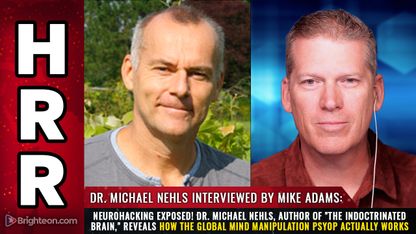
NEUROHACKING EXPOSED! Dr. Michael Nehls, author of “The Indoctrinated Brain,” reveals how the global mind manipulation psyop actually works Advertisement
A new study has revealed the potential link between contaminated common foods and cancer cases in the United States.
The study by researchers at Michigan State University (MSU) found that rice, wheat, leafy green vegetables, baby foods and dark chocolates with high heavy metal concentrations are connected to the thousands of cancer cases each year. Foods contaminated with metals such as lead and cadmium were linked to cases of bladder and lung cancer. Meanwhile, arsenic was linked to 7,000 cases of skin cancer.
Cadmium – a toxic metal found in nuts, potatoes, seeds, cereal grains, spinach and dark chocolates – was linked to 6,000 cases of bladder and lung cancer and 64,000 new cases of pancreatic cancer this year. Besides these three deadly cancers, this toxic metal is also linked to prostate, renal, breast and endometrial cancers. (Related: Excessive consumption of BAD CARBS increases risk of CANCER .)
Meanwhile, the American Cancer Society (ACS) found that foods like beets, chocolate and baby food tainted with lead increase the risk of brain, bladder, breast and stomach cancers. It noted that foods contaminated with lead are mostly linked to kidney cancer – which usually affects 81,800 Americans between the ages of 65 and 74 and kills 14,890 in the same cohort every year.
The MSU researchers also found that arsenic – a toxic chemical present in baby food, seafood, rice and mushrooms – increases the risk of developing skin and bladder cancer. Additionally, arsenic contributes to heart disease and has connections to neurodevelopmental disorders, increasing the risk of infant mortality.
“Results from these studies have important implications for food safety regulations, public health policies, and consumer awareness,” stated lead study author and MSU food scientist Felicia Wu. Baby foods still contain toxic chemicals despite FDA guidance
The MSU researchers also analyzed data from different studies on humans and animals conducted between 2000 and 2023 on the effects of these toxic chemicals on heart disease, kidney failure, live toxicity and developmental delays.
For instance, the study warned that young kids exposed to lead may experience hampered brain and nervous system development, echoing guidance by the Centers for Disease Control and Prevention. The Food and Drug Administration (FDA) also warned the public about high lead levels in WanaBana fruit puree pouches earlier this year after four children in North Carolina showed ‘extremely high’ concentrations in their blood.
About 2.5 percent of children under five may have been exposed to unsafe levels of lead, leading to slowed growth, learning difficulties, behavioral issues and problems with hearing and speech.
As a response, the researchers have called upon the FDA to enforce stricter limits on metals in food and for the food industry to adopt safer practices. In turn, the FDA has set limits for lead, arsenic and cadmium levels in different food categories. The FDA has set a limit of 10 parts per billion (ppb) for lead in certain fruits, vegetables and yogurt; and 20 ppb in root vegetables, including carrots, beets and potatoes.
However, Consumer Reports found that three out of 14 products are highly packed with lead, arsenic and cadmium even though the FDA has already set a recommended limit on these toxic metals.
Visit CancerCauses.news for more stories like this.
Watch the following video explaining why carbohydrates are the likely cause of significant heart disease instead of fats. Turns Out Likely Carbohydrates Instead Of Fats Cause Significant Heart Disease
This is a modal window.
No compatible source was found for this media.
This video is from the Josh Peck channel on Brighteon.com . More related stories:
“Substantial scientific evidence” shows that RF radiation from mobile phones causes cancer .
WHO warns of unusual surge in SEVERE MYOCARDITIS cases among newborns and infants in the UK .
Levels of dioxin chemical that causes cancer found at unacceptably high levels at Ohio train derailment site, EPA finally admits .
Moderna admits mRNA COVID jab causes CANCER, billions of DNA fragments found in vials .
Researchers discover breakthrough “switch” that causes cancer cells to self-destruct .
Sources include:
DailyMail.co.uk 1
DailyMail.co.uk 2
Brighteon.com
Shocking discovery that electric jolts to the brain may help us learn
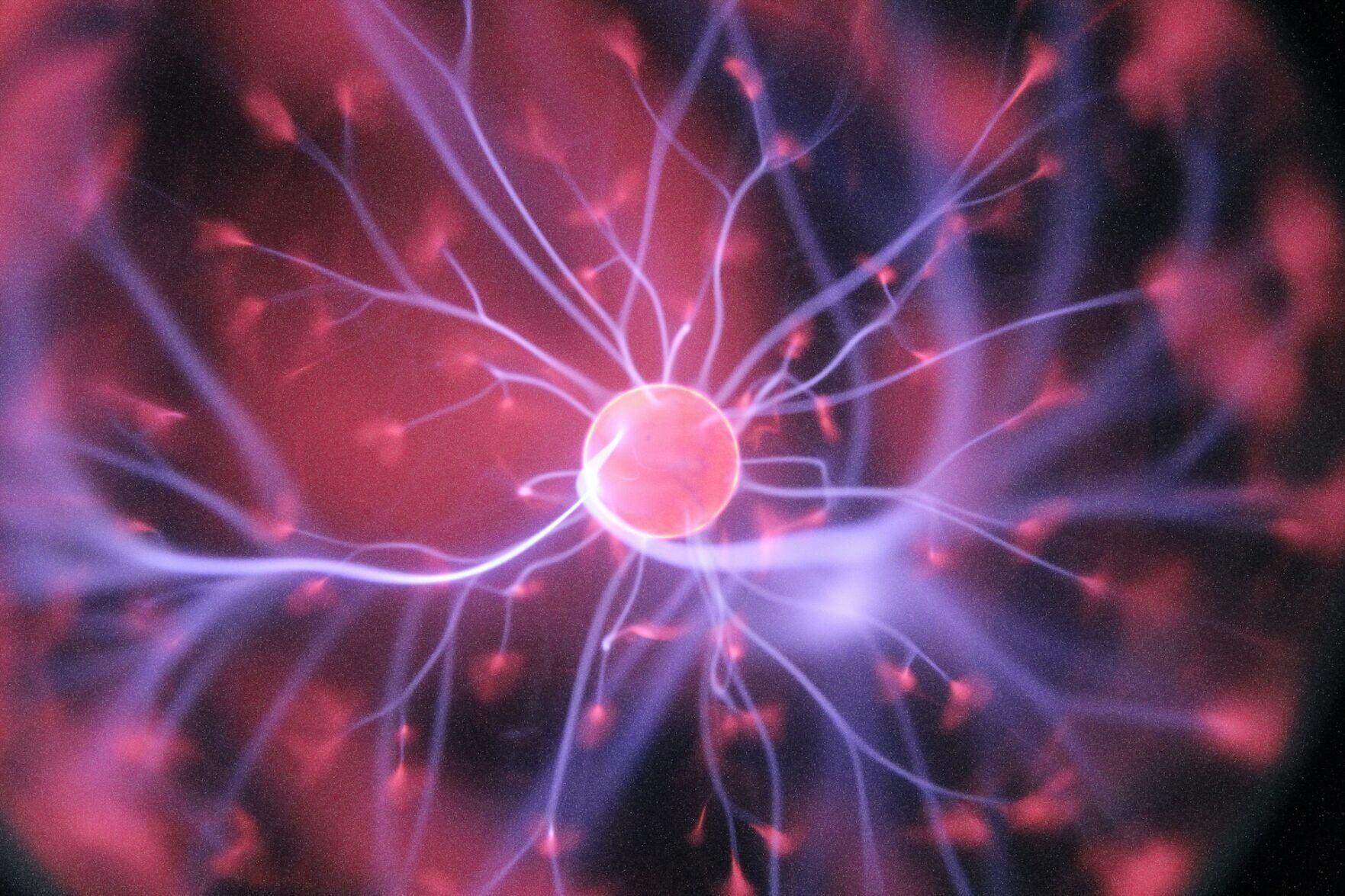
Hal Gatewood By James Gamble via SWNS
Electrical shocks to the brain could halve the amount of time it takes us to learn something complicated, a new study reveals.
Doctors operating robotic surgery tools that they had first learned to use in virtual reality performed better whilst receiving shocks to their brains than those who didn’t.
The fascinating research suggests stimulation to certain parts of the brain could help healthcare professionals take the skills they learn in virtual reality (VR) conditions into real operating rooms.
The American research team behind the study even suggested we could all soon be receiving shocks to the brain to halve the time it takes to learn something.
The study, published in the journal Nature Scientific Reports , offers evidence of the potential benefits there could be to brain stimulation in the medical sphere.
Participants in the study, from Johns Hopkins University in Baltimore, were tasked with driving a surgical needle through three small holes.
They first completed the task in a virtual simulation, and then in a real-life scenario using the da Vinci Research Kit – an open-source research robot. A study participant undergoing noninvasive brain stimulation sits at the surgical robot console using virtual reality simulations of needle-driving exercises. (Guido Caccianiga/Johns Hopkins University via SWNS) These exercises mimicked the intricate moves performed by doctors in surgical procedures on organs in the belly.
Whilst performing their task, the participants – none of whom were trained in either surgery or robotics – each received a subtle flow of electricity through small pads placed on their scalps, meant to stimulate an area of the brain called the cerebellum.
Half of the participants received steady flows of electricity throughout the test, whilst the other half received a brief stimulation only at the beginning and nothing at all for the rest of the tests.
The researchers discovered that those who received steady currents throughout the test demonstrated a notable boost in dexterity and performance. Ex // Top Stories
‘I feel like I can relax:’ Lake Merced RV dwellers soak in last-minute reprieve People living in recreational vehicles on Winston Drive originally would’ve had to move Dec. 19, if not for a last-minute extension last week It’s not just The City: US homelessness highest since ’07 It’s not just San Francisco. San Francisco leaders tout rise in drug busts amid record overdoses Police have arrested twice as many alleged drug dealers in the Tenderloin and SoMa in 2023 as last year, according to city officials
“The group that didn’t receive stimulation struggled a bit more to apply the skills they learned in virtual reality to the actual robot, especially the most complex moves involving quick motions,” said Guido Caccianiga, a former Johns Hopkins roboticist and current PhD candidate at the Max Planck Institute for Intelligent Systems.
“The groups that received brain stimulation were better at those tasks.”
Non-invasive brain stimulation can be used to influence specific parts of the brain from outside the body.
Scientists have already shown the benefits of such stimulation in areas such as motor learning in rehabilitation therapy.
But with their current work, the Johns Hopkins team is taking the research to a new level in testing how brain stimulation can help surgeons gain skills they may need in serious, real-world situations. (Photo by cotton bro studio via Pexels) Roboticist Jeremy Brown, an Associate Professor of Mechanical Engineering at Johns Hopkins, explained: “Training in virtual reality is not the same as training in a real setting, and we’ve shown with previous research that it can be difficult to transfer a skill learned in a simulation into the real world.
“It’s very hard to claim statistical exactness, but we concluded people in the study were able to transfer skills from virtual reality to the real world much more easily when they had this stimulation.”
Study co-author Gabriela Cantarero, a former assistant professor of physical medicine and rehabilitation at Johns Hopkins, added: “It was really cool that we were actually able to influence behavior using this setup, where we could really quantify every little aspect of people’s movements, deviations, and errors.”
Robotic surgery systems can provide significant benefits for clinicians by enhancing human skills and helping surgeons to minimize hand tremors and perform precise tasks with enhanced vision.
Besides influencing how surgeons of the future might learn new skills, this type of brain stimulation could also hold implications in other industries relying on VR training.
The researchers suggest that even outside of VR training, brain stimulation could help us to improve our ability to learn in general.
“What if we could show that with brain stimulation you can learn new skills in half the time?” Mr Caccianiga asked.
“That’s a huge margin on the costs because you’d be training people faster; you could save a lot of resources to train more surgeons or engineers who will deal with these technologies frequently in the future.”
First Atlas of Every Mouse Brain Cell Could Improve Neuro Disease Treatments
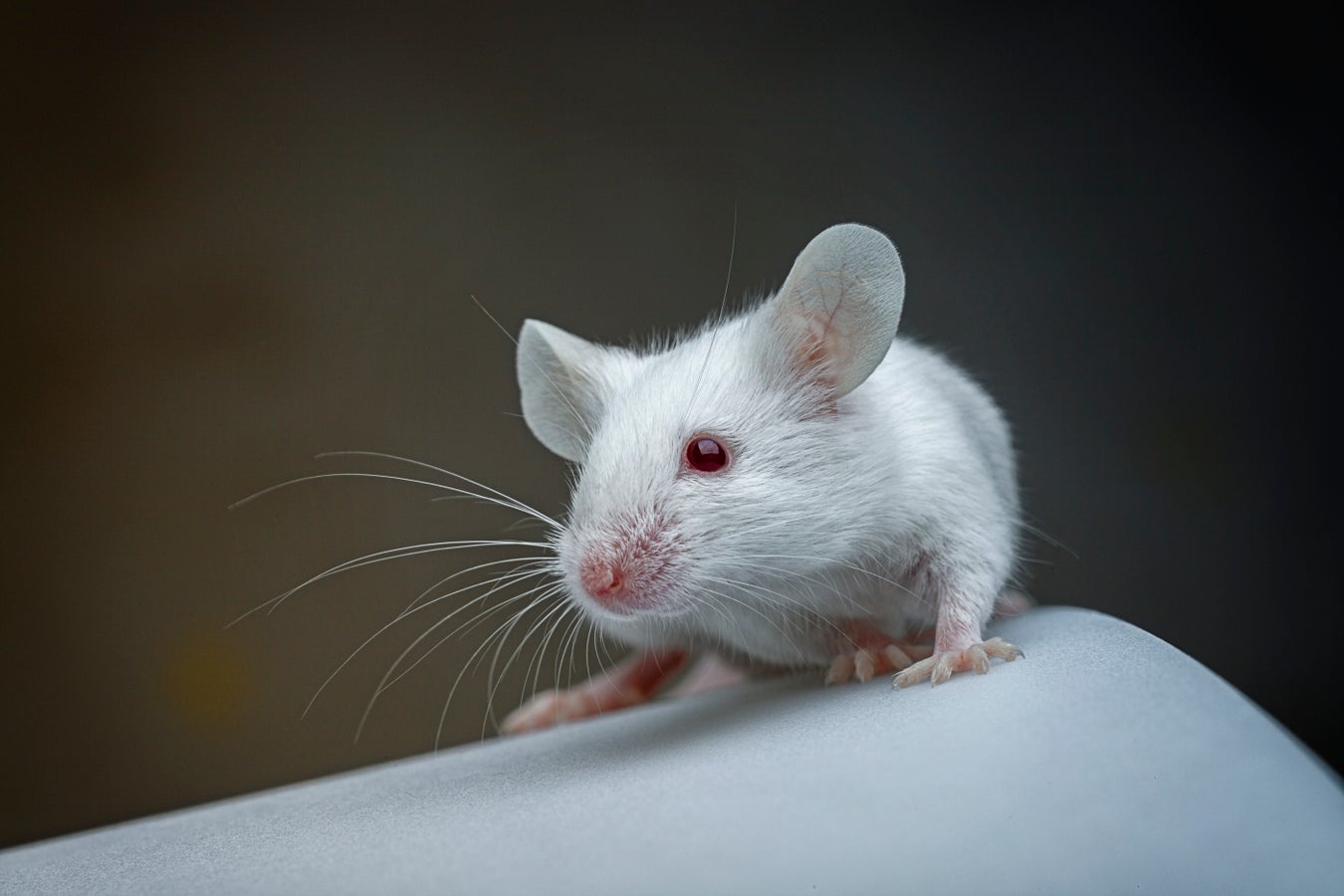
Several research teams have created an atlas of the mouse brain. The map, which has more than 5,300 cell clusters, should help to improve the treatment of brain diseases
By Karin Schlott How many different cell clusters are in the brain of a mouse? Where are they located, and what are their functions? A large international team of researchers has tackled this enormously difficult puzzle and presented a complete cell atlas of the mouse brain.
Experts at the Brain Research through Advancing Innovative Neurotechnologies (BRAIN) Initiative Cell Census Network) documented more than 5,300 different cell clusters, as they have reported in a total of 10 papers published in Nature . As it turns out, cell clusters are distributed in specific regions of the brain and differ depending on their location. This complex structure of the mammalian brain is apparently the result of a long evolutionary process. Hongkui Zeng , director of the Allen Institute for Brain Science in Seattle and a co-author of several of the studies, is convinced that the new brain map will allow researchers to finally see how the brain is organized.
For the scientists, the choice of the brain of the house mouse ( Mus musculus ) is obvious: The rodent is the model organism par excellence in biology and medicine. It furnishes the best way to create an exemplary atlas of a mammalian brain.
The researchers employed various analytic methods for their studies, including different single-cell analyses. These can be used to investigate the genetic activity of brain cells. Among other things, the aim was to find out which messenger RNAs (mRNAs) the mouse brain cells produced. Based on the various RNA snippets, the scientists were then able to deduce how many different cell clusters there are in that brain because each of them produces a characteristic signature of mRNA molecules.
At the same time, the team also determined the spatial position of the cells in the brain. This is what makes this mammoth project so special: all the researchers involved not only mapped “the entire mouse brain” for the first time but also did so using spatial transcriptomics, allowing “cell types to be placed in their native tissue context,” wrote neurologist Maria Antonietta Tosches of Columbia University in an accompanying commentary in Nature .
The researchers sequenced several million cells and collected their location data in the rodent brain. The team then divided the brain cells into four levels comprising a total of 5,322 clusters. The experts also mapped how the individual clusters interact with one another and are in contact with the help of neurotransmitters and neuropeptides.
The 10 studies produced a plethora of results. Deep within the brain—in the areas of the hypothalamus, midbrain and hindbrain—the range of cell types is much greater than in the evolutionarily younger cerebral cortex. “These findings indicate that different rules govern neuronal diversity across the brain, perhaps because each region evolved under different constraints,” Tosches explained in the Nature commentary. The difference could be linked to the fact that the parts of the brain below the cortex have changed less over the course of evolution than the upper parts—possibly because the lower parts control more of the body’s basic functions.
The results of the new studies should also support existing plans to map the human brain . One aim of all this research is to improve the treatment of neurodegenerative diseases and neurological disorders. It is known, for example, that many diseases develop in certain regions of the brain—possibly because specific cell types have changed. According to Zeng, a brain atlas could be used to develop gene therapies or drugs to directly target cells and thus reduce medications’ side effects.
The researchers also hope that their atlas will stimulate numerous other research projects. And finding out the function of the cells and their role in disease may keep the team busy for the next 20 years.
This article originally appeared in Spektrum der Wissenschaft and was reproduced with permission.
Exercise can boost brain health
A fascinating link between regular exercise and better brain health has been revealed, according to an international study that included a team of clinical researchers from Pacific Neuroscience Institute’s Brain Health Center, located at Providence Saint John’s Health Center.
The research, detailed in the paper “Exercise-Related Physical Activity Relates to Brain Volumes in 10,125 Individuals,” was published this week in the Journal of Alzheimer’s Disease and shows being physically active is related to increased size of brain areas important for memory and learning.
The study looked at MRI brain scans from 10,125 people done at Prenuvo imaging centers, a key collaborator in the research.
It found those who regularly engaged in physical activities such as walking, running or sports had larger brain volumes in key areas.
This includes the gray matter, which helps with processing information, and the white matter, which connects different brain regions, as well as the hippocampus, important for memory.
Cyrus A. Raji, M.D., the lead researcher, explains the findings in simple terms: “Our research supports earlier studies that show being physically active is good for your brain. Exercise not only lowers the risk of dementia but also helps in maintaining brain size, which is crucial as we age.”
David Merrill, M.D., study co-author and director of the PBHC noted, “We found that even moderate levels of physical activity, such as taking fewer than 4,000 steps a day, can have a positive effect on brain health. This is much less than the often-suggested 10,000 steps, making it a more achievable goal for many people.”
Study co-authorSomayeh Meysami, M.D. , assistant professor of neurosciences at Saint John’s Cancer Institute and the Pacific Brain Health Center noted, “Our research links regular physical activity to larger brain volumes, suggesting neuroprotective benefits. This large sample study furthers our understanding of lifestyle factors in brain health and dementia prevention . “
A Lancet Study in 2020 found about a dozen modifiable risk factors increase risk for Alzheimer’s disease, including physical activity.
This work builds upon previous work by this group, linking caloric burn from leisure activities to improved brain structure.
“This study demonstrates the influence of exercise on brain health imaging and when added to other studies on the role of diet, stress reduction and social connection offer the proven benefits of drug-free modifiable factors in substantially reducing Alzheimer’s disease,” said George Perry, Editor-in-Chief of Journal of Alzheimer’s Disease.
“With comprehensive imaging scans, our study underscores the interconnected synergy between the body and the brain. It echoes the knowledge of past generations, showcasing that increased physical activity is a predictor of a healthier aging brain,” said Dr. Attariwala, senior author of this paper.
This research highlights an easy way to keep our brains healthy: stay active! Whether it’s a daily walk or a favorite sport, regular physical activity can have lasting benefits for our brain health.
7 Smart Strategies to Boost Your Brain Health in the New Year, According to a Cognitive Neuroscientist

Write these down. Hiroshi Watanabe/Getty Images Looking for actionable ways to stay sharp, maximize your natural brain power, improve mental health, and prevent cognitive decline? Of course you are. The good habits and healthy mindsets we adopt right now really can help protect and maintain our brain health in the long term. But what exactly are the key habits and lifestyle factors that keep the brain “young” and thriving for as long as possible? The answer isn’t as simple as downloading another brain game app ( the science is pretty fuzzy on whether they actually do anything). Instead, cognitive neuroscientist Julie Fratantoni, PhD, head of research and strategic partnerships at Center for BrainHealth , shares the best, science-backed strategies to hack your brain health—and put the brain power you already have to even better use.
Related: 6 Everyday Habits to Train Your Brain to Be Happier Create High-Level Goals—and Set Mini-Goals Along the Way
Setting and working toward a valued goal supports both your sense of well-being and important brain systems. “Having clearly defined goals can strengthen your sense of purpose,” Fratantoni says.
According to Fratantoni, goal-setting is a fantastic exercise for the brain’s frontal network, the region involved in high-level executive functions, reasoning and decision-making, information retrieval, and emotion regulation (just to name a few). “When you engage in setting goals, planning, and prioritization, you’re exercising your frontal network,” she says. “Your frontal lobe is the first part of the brain that’s vulnerable to decline over time, so anything you can do to strengthen it is good.”
Plus, as you take incremental strides toward a larger resolution and accomplish small steps along the way, “you’re activating the brain’s reward network to produce dopamine (which is both motivating and rewarding),” Fratantoni says.
Do focused work toward your goal every day.
Do something that propels you toward the main goal every day for a realistic chunk of time. Fratantoni calls this your “elephant.” “The elephant is not the goal, [but it’s] something you can work on for 45 minutes of focused work that moves you forward,” she says.
Leverage your personal, prime-time mental energy.
Take stock of when you have the most energy and brain power—and then use it to get real stuff done. “This is about being strategic with your mental energy,” Fratantoni explains. “Many people feel sharpest in the morning [and] use that time to answer emails and do other busywork. Instead, block that time to work on a task that will move a major project forward. Save emails and busywork for when you have less energy.”
Related: How to Make Good Habits Stick—Go Beyond New Year’s Resolutions Build Confidence Through Patterns of Positive Self-Talk
It’s time to break free from self-deprecating thought patterns, which trap us in loops of anxiety that limit our cognitive capabilities. Building confidence and generating a positive self-perception (skills that can be learned with practice!) doesn’t just create a more pleasant headspace—it can help change the way your brain works and set you up for better problem-solving, resilience, and innovation.
“When you’re feeling anxious, the anterior cingulate cortex (ACC) narrows your options to fight/flight/freeze, so you are able to act quickly [for survival],” Fratantoni says. “On the other hand, confidence quiets the anxious systems, which allows you to think creatively and solve problems.”
Actively replace pessimistic thoughts with confidence-boosting thoughts.
Instead of fighting to stop negative self-talk (which can seem to have a mind of its own), work on replacing it with confidence-building, self-affirming thoughts . “Telling yourself simple phrases such as ‘I can do this,’ and ‘this can happen,’ help to cultivate a confident mindset,” she says.
Keep some deep breathing exercises in your back pocket.
When your negative thoughts or self-doubt go haywire, Fratantoni recommends practicing a simple slow breathing exercise (inhale for four counts, exhale for six counts) to get your system out of anxiety mode and “bring your rational brain back online.”
More easy breathing exercises to try: Box Breathing
4-7-8 Breathing
Mindful Breathing Series
Related: Want to Be More Positive? Here Are 7 Things Optimistic People Do Differently Get Your Heart Rate Up Routinely
It really can’t be overstated how beneficial exercise is for brain health and mood management —not just your heart, bones, joints, and muscles. Prioritize getting a daily dose of heart-pumping movement to increase blood flow to the brain and boost cognition .
“Moving your body and raising your heart rate improves thinking, learning, problem-solving and emotional balance,” Fratantoni says. “Physical exercise sparks the birth of new neurons in the hippocampus, which is the part of the brain that is responsible for memory and learning . [It also] increases brain derived neurotropic factor (BDNF) , which sparks the birth of new neurons.”
Find ways to move that don’t intimidate you—and that you’re likely to return to consistently.
Just a small increase in physical activity (even if you’re starting at zero!) is all it takes to see some benefits. So, think small. Walking is a fantastic form of exercise , especially if you can pick up the pace a little bit, or walk on an incline , to the point where you’re breathing a bit heavier and raising your heart rate. Even vigorous gardening or household chores , the kind of tasks that make you want to strip down to just a T-shirt—like vacuuming or cleaning out the garage—all count.
Advertisement
“Small changes can make a big impact,” Fratantoni says. “Taking the stairs, going on a 10-15 minute walk every day , and even playing with your kids are all small but important ways to keep you active throughout the day that don’t require spending hours in the gym.” Boost Your Memory: Challenge Yourself to Think Even Deeper Memory decline is a normal part of getting older, but it doesn’t always need to happen so soon or so rapidly. Wondering how to “workout” your memory “muscles” for better information retention and recall? Challenge yourself to expand upon the info you’ve taken in.”After you engage with information (like a podcast, article, or […]
Guayusa tea and lion’s mane supplements could improve cognitive function

Supplements derived from the fungus known as as lion’s mane (pictured above) and guayusa tea could help improve mood and cognitive function. Image credit: Alex Ratson/Getty Images. Guayusa and lion’s mane are two natural dietary supplements that may have health benefits.
Usually taken as a tea made from the leaves, guayusa is a plant in the Ilex (holly) family. Lion’s mane is a mushroom, used for culinary purposes, which can also be taken as a supplement.
Studies have suggested that both have antioxidant and anti-inflammatory properties, alongside other health benefits.
A new study has found that they might also enhance mood and cognitive function.
Many people take supplements to enhance their health and wellbeing, but while animal studies have demonstrated their positive effects, there is little conclusive evidence of their efficacy in people.
Guayusa is from a tree in the holly family, Ilex guayusa , which grows widely in South America. People have been drinking it as a tea in the western Amazon for centuries. The plant contains many polyphenols and alkaloids , one of which is caffeine.
Potential health benefits of guayusa include: antioxidant activity
anti-inflammatory effects
cardiovascular protection
anti-obesity and anti-diabetic effects
neuroprotective activity.
Lion’s mane is a white, spherical mushroom ( Hericium erinaceus ). In Asia, it is used for both culinary and medicinal purposes, and it is becoming increasingly available as a supplement, because of its reported health benefits. The extract can be taken as capsules, liquid, tablet or powder.
Studies have suggested that benefits of lion’s mane may include: antioxidant and anti-inflammatory properties
supporting immune function
relieving anxiety and depression
lowering cholesterol
cancer prevention or treatment
controlling blood sugar
cognitive benefits.
Until now, evidence for these benefits has been largely from animal studies.
A new study now suggests that both supplements may enhance mood and cognition in people. The study is published in the journal Nutrients .
Kelsey Costa , a registered dietitian and nutrition consultant for the National Coalition on Healthcare, not involved in this research, commented on the study for Medical News Today : “The study’s findings align with previous research suggesting cognitive benefits from these natural compounds. However, we should approach these results with cautious optimism given the study’s limited size and funding source — Applied Food Sciences Inc., the makers of AMT [the guayusa supplement]. This introduces the potential for bias in the study design and interpretation of results.” Small study looks at herbal supplements for brain health
A total of 40 people took part in the study — 22 female and 18 male particiapants. All were aged between 18 and 50 years, were in good health, had a body mass index (BMI) between 18.5–39.9 kilograms per square meter (kg/m 2 ), and were habitual consumers of up to 240 milligrams (mg) of caffeine — equivalent to around 2–3 cups of coffee — per day.
Participants underwent one screening visit and three test visits. At the screening visit, researchers assessed their health and diet, and participants did practice neuropsychological assessments to familiarize themselves with the processes for the test visits.
For 24 hours before each test visit, participants had to eat exactly the same diet and avoid exercise and alcohol. In addition, they were told to avoid caffeine for 12 hours, and fast for 8 hours before the test visit.
On arrival for each test visit, they were randomly allocated to receive placebo, 650 mg guayusa extract (AMT: AmaTea® Max), or 1 gram (g) Nordic-grown lion’s mane.They completed baseline testing to assess mood, focus, mental clarity, concentration, ability to be productive and tolerate stress, and happiness (using the Subjective Happiness Scale ), before taking the supplement, after 60 minutes and after 120 minutes.At each time point, participants also underwent neuropsychological assessments, which assessed reaction time, mental processing, cognitive control, and attention. Researchers also checked their blood pressure and heart rate. Guayusa and lion’s mane improved mood and cognition Researchers found that both supplements improved reaction time, with lion’s mane having a greater effect at 120 minutes than 60, suggesting a delayed response after ingestion.The two supplements had some different effects, with lion’s mane appearing to have some more lasting effects than guayusa. This finding is backed up by a study that suggests lion’s mane given over an 8-week period decreased depression, anxiety, and sleep disorders in a group of people with overweight or obesity. Guayusa significantly improved mental clarity, focus, concentration, mood, and productivity at 60 and 120 minutes post ingestion, and the ability to tolerate stress at 60 minutes. Lion’s mane improved subjective ratings of happiness at 60 minutes and this effect persisted to 120 minutes, whereas guayasa improved this only at 120 minutes. The researchers caution that guayusa did raise both diastolic and systolic blood pressure by, on average 5mmHg, but that it remained within the normal range for healthy blood pressure. Learn About Healthy Eating Explore Our Science-Backed Nutrition Resources How might guayusa and lion’s mane have these effects? “Guayusa has caffeine and similar derivatives. These are essentially stimulants, which we know can boost cognitive performance,“ Prof. Maryann Amirshahi , medical director of the National Capital Poison Center, not involved in this study, explained to MNT . “Guayusa and lion’s mane also contain antioxidants — these are chemicals that prevent damage to nerves and other cells. There are many different chemicals in both of these, so it is hard to say which one, or a combination of them is what boosts cognitive performance,” she noted. Prof. Amirshahi nevertheless cautioned that the study had some limitations: “An important limitation of a recent study is that they only looked at cognitive performance at 2 hours. We do not know how long these effects last and if they are offset by poor sleep. We also do not know how effective or safe they are with longer term use.”Costa further explained some of the effects: “As noted by the authors, caffeine appears as a key factor in the observed cognitive improvements associated with AMT. […] Essentially, caffeine boosts alertness […]
Guayusa tea and lion’s mane supplements could improve cognitive function

Supplements derived from the fungus known as as lion’s mane (pictured above) and guayusa tea could help improve mood and cognitive function. Image credit: Alex Ratson/Getty Images. Guayusa and lion’s mane are two natural dietary supplements that may have health benefits.
Usually taken as a tea made from the leaves, guayusa is a plant in the Ilex (holly) family. Lion’s mane is a mushroom, used for culinary purposes, which can also be taken as a supplement.
Studies have suggested that both have antioxidant and anti-inflammatory properties, alongside other health benefits.
A new study has found that they might also enhance mood and cognitive function.
Many people take supplements to enhance their health and wellbeing, but while animal studies have demonstrated their positive effects, there is little conclusive evidence of their efficacy in people.
Guayusa is from a tree in the holly family, Ilex guayusa , which grows widely in South America. People have been drinking it as a tea in the western Amazon for centuries. The plant contains many polyphenols and alkaloids , one of which is caffeine.
Potential health benefits of guayusa include: antioxidant activity
anti-inflammatory effects
cardiovascular protection
anti-obesity and anti-diabetic effects
neuroprotective activity.
Lion’s mane is a white, spherical mushroom ( Hericium erinaceus ). In Asia, it is used for both culinary and medicinal purposes, and it is becoming increasingly available as a supplement, because of its reported health benefits. The extract can be taken as capsules, liquid, tablet or powder.
Studies have suggested that benefits of lion’s mane may include: antioxidant and anti-inflammatory properties
supporting immune function
relieving anxiety and depression
lowering cholesterol
cancer prevention or treatment
controlling blood sugar
cognitive benefits.
Until now, evidence for these benefits has been largely from animal studies.
A new study now suggests that both supplements may enhance mood and cognition in people. The study is published in the journal Nutrients .
Kelsey Costa , a registered dietitian and nutrition consultant for the National Coalition on Healthcare, not involved in this research, commented on the study for Medical News Today : “The study’s findings align with previous research suggesting cognitive benefits from these natural compounds. However, we should approach these results with cautious optimism given the study’s limited size and funding source — Applied Food Sciences Inc., the makers of AMT [the guayusa supplement]. This introduces the potential for bias in the study design and interpretation of results.” Small study looks at herbal supplements for brain health
A total of 40 people took part in the study — 22 female and 18 male particiapants. All were aged between 18 and 50 years, were in good health, had a body mass index (BMI) between 18.5–39.9 kilograms per square meter (kg/m 2 ), and were habitual consumers of up to 240 milligrams (mg) of caffeine — equivalent to around 2–3 cups of coffee — per day.
Participants underwent one screening visit and three test visits. At the screening visit, researchers assessed their health and diet, and participants did practice neuropsychological assessments to familiarize themselves with the processes for the test visits.
For 24 hours before each test visit, participants had to eat exactly the same diet and avoid exercise and alcohol. In addition, they were told to avoid caffeine for 12 hours, and fast for 8 hours before the test visit.
On arrival for each test visit, they were randomly allocated to receive placebo, 650 mg guayusa extract (AMT: AmaTea® Max), or 1 gram (g) Nordic-grown lion’s mane.They completed baseline testing to assess mood, focus, mental clarity, concentration, ability to be productive and tolerate stress, and happiness (using the Subjective Happiness Scale ), before taking the supplement, after 60 minutes and after 120 minutes.At each time point, participants also underwent neuropsychological assessments, which assessed reaction time, mental processing, cognitive control, and attention. Researchers also checked their blood pressure and heart rate. Guayusa and lion’s mane improved mood and cognition Researchers found that both supplements improved reaction time, with lion’s mane having a greater effect at 120 minutes than 60, suggesting a delayed response after ingestion.The two supplements had some different effects, with lion’s mane appearing to have some more lasting effects than guayusa. This finding is backed up by a study that suggests lion’s mane given over an 8-week period decreased depression, anxiety, and sleep disorders in a group of people with overweight or obesity. Guayusa significantly improved mental clarity, focus, concentration, mood, and productivity at 60 and 120 minutes post ingestion, and the ability to tolerate stress at 60 minutes. Lion’s mane improved subjective ratings of happiness at 60 minutes and this effect persisted to 120 minutes, whereas guayasa improved this only at 120 minutes. The researchers caution that guayusa did raise both diastolic and systolic blood pressure by, on average 5mmHg, but that it remained within the normal range for healthy blood pressure. Learn About Healthy Eating Explore Our Science-Backed Nutrition Resources How might guayusa and lion’s mane have these effects? “Guayusa has caffeine and similar derivatives. These are essentially stimulants, which we know can boost cognitive performance,“ Prof. Maryann Amirshahi , medical director of the National Capital Poison Center, not involved in this study, explained to MNT . “Guayusa and lion’s mane also contain antioxidants — these are chemicals that prevent damage to nerves and other cells. There are many different chemicals in both of these, so it is hard to say which one, or a combination of them is what boosts cognitive performance,” she noted. Prof. Amirshahi nevertheless cautioned that the study had some limitations: “An important limitation of a recent study is that they only looked at cognitive performance at 2 hours. We do not know how long these effects last and if they are offset by poor sleep. We also do not know how effective or safe they are with longer term use.”Costa further explained some of the effects: “As noted by the authors, caffeine appears as a key factor in the observed cognitive improvements associated with AMT. […] Essentially, caffeine boosts alertness […]
New study shows exercise can boost brain health

Credit: CC0 Public Domain A fascinating link between regular exercise and better brain health has been revealed, according to an international study that included a team of clinical researchers from Pacific Neuroscience Institute’s Brain Health Center, located at Providence Saint John’s Health Center.
The research, detailed in the paper “Exercise-Related Physical Activity Relates to Brain Volumes in 10,125 Individuals,” was published in the Journal of Alzheimer’s Disease and shows being physically active is related to increased size of brain areas important for memory and learning.
The study looked at MRI brain scans from 10,125 people done at Prenuvo imaging centers, a key collaborator in the research. It found those who regularly engaged in physical activities such as walking, running or sports had larger brain volumes in key areas. This includes the gray matter , which helps with processing information, and the white matter , which connects different brain regions, as well as the hippocampus, important for memory.
Cyrus A. Raji, M.D., the lead researcher, explained, “Our research supports earlier studies that show being physically active is good for your brain. Exercise not only lowers the risk of dementia but also helps in maintaining brain size , which is crucial as we age.”
David Merrill, M.D., study co-author and director of the PBHC noted, “We found that even moderate levels of physical activity , such as taking fewer than 4,000 steps a day, can have a positive effect on brain health. This is much less than the often-suggested 10,000 steps, making it a more achievable goal for many people.”
Study co-author Somayeh Meysami, M.D., assistant professor of neurosciences at Saint John’s Cancer Institute and the Pacific Brain Health Center noted, “Our research links regular physical activity to larger brain volumes, suggesting neuroprotective benefits. This large sample study furthers our understanding of lifestyle factors in brain health and dementia prevention.”
A Lancet Study in 2020 found about a dozen modifiable risk factors increase risk for Alzheimer’s disease, including physical activity. This work builds upon previous work by this group, linking caloric burn from leisure activities to improved brain structure.
“This study demonstrates the influence of exercise on brain health imaging and when added to other studies on the role of diet, stress reduction and social connection offer the proven benefits of drug-free modifiable factors in substantially reducing Alzheimer’s disease,” said George Perry, Editor-in-Chief of Journal of Alzheimer’s Disease.
“With comprehensive imaging scans, our study underscores the interconnected synergy between the body and the brain. It echoes the knowledge of past generations, showcasing that increased physical activity is a predictor of a healthier aging brain,” said Dr. Attariwala, senior author of this paper.
This research highlights an easy way to keep our brains healthy: stay active! Whether it’s a daily walk or a favorite sport, regular physical activity can have lasting benefits for our brain health.
Provided by IOS Press
There’s a ‘Wave of Death’ in Every Human Brain. Scientists Are Scrambling to Stop It.

Working to Stave Off Brain’s ‘Wave of Death’Ioannis Tsotras – Getty Images Researchers studying the brain’s final moments have gained new insight into the “wave of death” that occurs before a brain’s activity fully flatlines.
When neural activity stops, it doesn’t stop abruptly, but over time.
The team hopes to find ways to keep the brain functioning even when the heart and lungs fail.
The brain doesn’t shut off like a light switch, even as death approaches. While other bodily organs —namely the heart and lungs—have sudden stops, the brain flickers on through active neurons in a “wave of death ” until it reaches a state of electrical silence.
Brain researchers in Paris have been working to better understand these cascading changes that occur when a brain is deprived of oxygen , as well as what they mean for our conceptualization of death. The results, published in the journal Neurobiology of Disease , show where this wave originates and just how we can potentially stave it off.
Stephane Charpier, head of the research team at the Paris Brain Institute and study author, said in a statement that her team now knows “that a flat EEG does not necessarily mean the definitive cessation of brain functions.” This means that there could be hope for our ability to keep an oxygen-starved brain working even longer than expected.
When the brain stops receiving oxygen, the adenosine triphosphate (ATP) stores that act as fuel for the cells quickly get sucked away. Then, it all becomes a bit chaotic. Electrical balances go out of whack and huge amounts of chemicals are released. “Neural circuits seem to shut down at first,” Severine Mahon, another author on the paper, said in a statement, “then we see a surge in brain activity—specifically an increase in gamma and beta waves. These waves are usually associated with a conscious experience. In this context, they may be involved in near-death experiences reported by people who have survived cardiorespiratory arrest.”
Once the process starts, the neuron activity trends downward until the brain is completely electrically silent. But that isn’t the end, because it’s now time for the “wave of death,” which totally alters the function and structure of the brain. “This critical event, called anoxic depolarization, induces neuronal death throughout the cortex,” Antoine Carton-Leclercq, first author on the study, said in a statement. “Like a swan song, it is the true marker of transition toward the cessation of all brain activity.”
Advertisement
And now we know where it’s coming from. The team found (while studying rats ) that the wave originates in a part of the brain called the neocortex—a region that makes up a large percentage of your brain, which can be divided into six layers. The “wave of death” seems to originate in layer five, deep in the tissue of the neocortex. “We have observed this same dynamic under different experimental conditions,” Mahon said, “and believe it could exist in humans.”
Why does this phenomenon come from so deep in the brain? The team believes that this “wave of death” starts in layer five because the neurons in that layer have exceptionally high oxygen requirements. But it seems like restoring oxygen flow can reverse at least some of these effects. When the team reoxygenated the rats’ brains, the cells replenished their ATP reserves and restored synaptic activity.
And that means there’s hope that the wave can be stopped . Carton-Leclercq said that researchers already knew that brain function could be protected if a patient was resuscitated fast enough. But—while it may take time to figure out exactly how to stop this wave—knowing where it comes from could eventually be helpful in preserving function even more effectively.
“This new study advances our understanding of the neural mechanisms underlying changes in brain activity as death approaches,” Charpier said in a statement. “It is now established that, from a physiological point of view, death is a process that takes its time… and that it is currently impossible to dissociate it rigorously from life.”
“We now need to establish the exact conditions under which these functions can be restored,” Charpier continues, “and develop neuroprotective drugs to support resuscitation in the event of heart and lung failure.”
You Might Also Like
Study links tiny pieces of plastic in the environment to Parkinson’s and Alzheimer’s diseases

It is no secret that the plastics in our environment are making us ill, but recent research demonstrates the power of a specific type of plastic to destroy our brains and cause diseases such as Parkinson’s and Lewy body dementia. The study was carried out by scientists from Duke University and published in the journal Science Advances .
The plastics in question are nanoplastics, which are miniscule particles of plastic that come from common plastic objects that we use in our everyday lives. In particular, the researchers found that polystyrene nanoparticles, which come from plastic utensils, plastic cups and similar items, bind to a protein known as alpha-synuclein which has been linked to Lewy body dementia and Parkinson’s disease.
Scientists have observed buildups of aberrant types of this protein in Parkinson’s patients. Alpha-synuclein is believed to serve an important function in keeping neurons in the brain healthy , but when it becomes misfolded or warped, it can lead to problems. Scientists do not fully understand yet whether this is a cause or a symptom of Parkinson’s.
The researchers witnessed this type of accumulation in cultured neurons, test tubes and mouse models. The study’s lead author, Andrew West, said that the team’s most surprising discovery while conducting their research was the strong connections formed between the protein and plastic within neuron lysosomes. These are digestive organelles that allow cells to break down waste products with support from enzymes. Evidence shows that plastic therefore interferes with neurons’ natural cleaning processes.
West noted in a statement: “Our study suggests that the emergence of micro and nanoplastics in the environment might represent a new toxin challenge with respect to Parkinson’s disease risk and progression.”
Although further studies are needed to explore this connection further, this study is just the latest in a large body of epidemiological and lab research demonstrating how the environment is playing a role in the rise in Parkinson’s disease being seen right now.
Parkinson’s is currently the fastest-growing neurological disorder worldwide. Unfortunately, the presence of these plastic toxins in our water and food supply is only expected to grow, which means that many more people could be at risk of developing this devastating illness in the near future.
Scientists do not fully understand what causes Parkinson’s, although they have plenty of evidence that exposure to certain pollutants and toxins are risk factors for the disease. While many studies have focused on pesticides and chemicals, few have looked into the role nanoplastics could play in the development of the disease. Plastics in the environment must be studied in depth to determine their role in illness
There is a growing body of evidence that nanoplastics can be found throughout our environment, especially in indoor air. When people inhale them, they enter the brain and the bloodstream directly, raising people’s risk of cancer.
Some experts have pointed out that previous environments have a big influence on people’s current health. Just like previous smoking habits raise a person’s risk of lung cancer, living environments replete with nanoplastics can raise a person’s risk of cancer, Parkinson’s and Alzheimer’s.
It is an unfortunate reality that most people are already carrying microscopic plastic particles in their blood, and determining how that is affecting our health will be a key area of scientific research in the coming years.
West stated: “While microplastic and nanoplastic contaminants are being closely evaluated for their potential impact in cancer and autoimmune diseases, the striking nature of the interactions we could observe in our models suggest a need for evaluating increasing nanoplastic contaminants on Parkinson’s disease and dementia risk and progression.”
Sources for this article include:
GreatGameIndia.com
ScienceAlert.com
Brainoware: A breakthrough AI approach using brain organoids for advanced computation
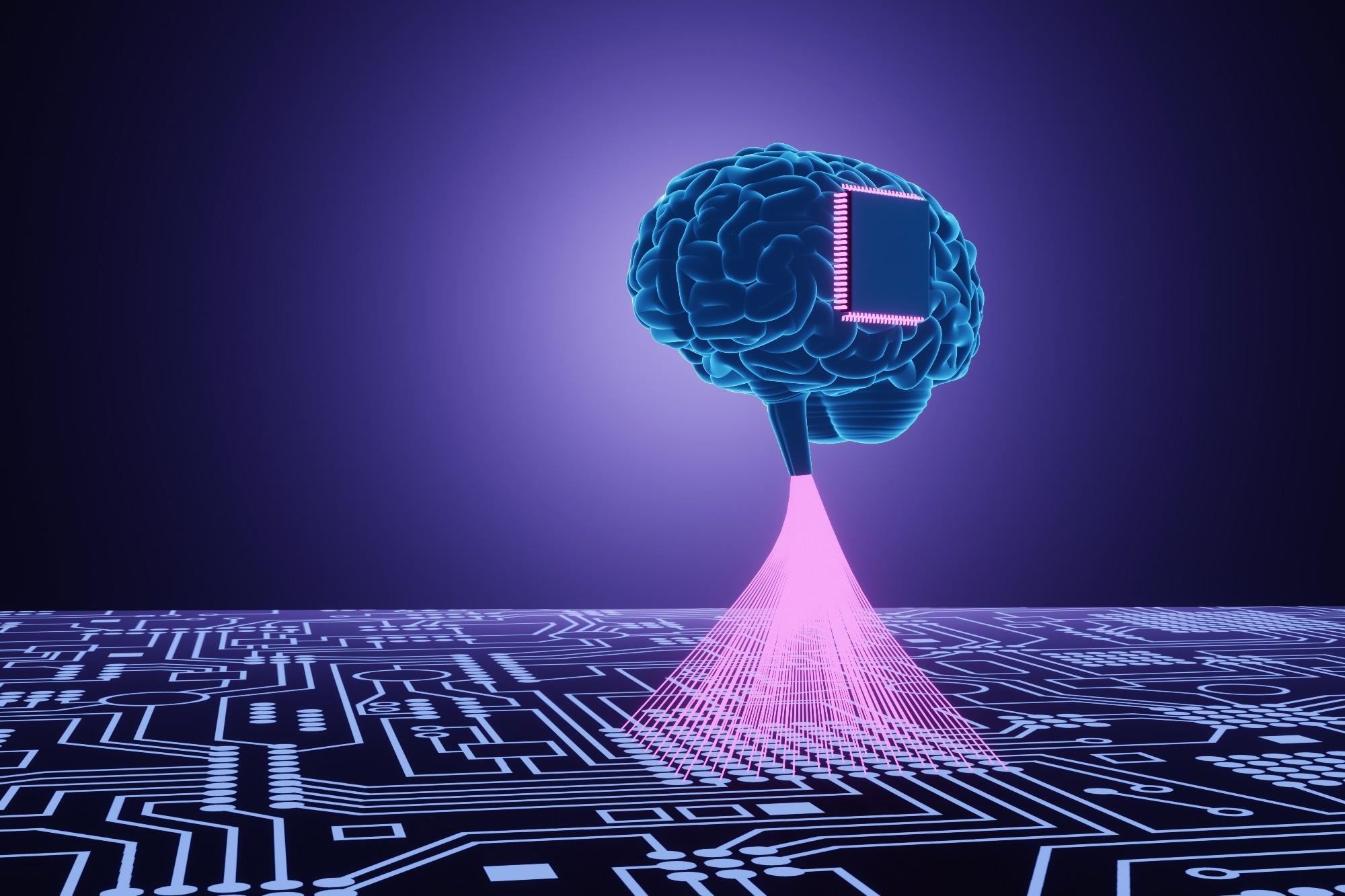
In a study published in the journal Nature Electronics , researchers in the United States of America developed an artificial intelligence (AI) hardware approach named “Brainoware” that employs adaptive reservoir computation of the brain organoid neural networks (ONNs). They found that the approach could achieve nonlinear dynamics, fading memory properties, and unsupervised learning, demonstrating its practical potential in tasks such as nonlinear equation prediction and speech recognition.
Study: Brain organoid reservoir computing for artificial intelligence. Image Credit: Dragon Claws / Shutterstock Study: Brain organoid reservoir computing for artificial intelligence . Image Credit: Dragon Claws / Shutterstock Background
Silicon computer chips majorly drive the artificial neural networks (ANNs) that form the basis of AI. However, training ANNs on these chips has limitations such as high energy and time consumption, the Neumann bottleneck (physical segregation of data from data processing), and slowing of Moore’s law (slower doubling of transistors in an integrated circuit). This emphasizes the need to design new AI hardware approaches.
The human brain, with its complex three-dimensional network of cells and synapses, inspires the development of AI hardware due to its energy efficiency, neurogenesis, and neuronal plasticity that enable the processing of noisy data at minimal training cost. While neuromorphic chips attempt to mimic brain functions, there is a need to enhance their capabilities in terms of processing information, addressing real-life uncertainty, and utilizing energy.
Brain organoids are three-dimensional aggregates developed in vitro using stem cells to mimic brain structure and function. Researchers in the present study developed a novel AI hardware system named “Brainoware” using brain organoids, which harnesses reservoir computation and learning abilities of neural networks of the organoid. About the study
Brainoware was integrated into a reservoir computing framework with three main components: an input layer, a reservoir layer (organoid), and an output layer. The system was constructed by mounting a functional brain organoid, developed using human pluripotent stem cells, onto a high-density multielectrode array (MEA). The organoid formed the reservoir layer and showed the presence of various brain cell types, early brain-like structures, and network electrical activity. The organoid received signals via the input layer, which converted time-dependent inputs into spatiotemporal sequences of electric stimulation. The brain organoid acted as an “adaptive living reservoir” that mapped these signals to the ONNs. In the output layer, the MEA recorded neural activities representing the reservoir state (using techniques like linear or logistic regression), and decoded them to provide readouts for applications like classification, recognition, and prediction.
The physical reservoir properties of Brainoware were tested, including nonlinear dynamics, spatial information processing, and fading memory, by assessing the ONN’s response to stimulations of varying pulse times and voltages. The system was then applied to real-world tasks such as speech recognition and nonlinear chaotic equation prediction.
In the speech recognition task, Brainoware was required to identify the speaker’s vowels in a speaker pool. A total of 240 audio clips of isolated Japanese vowels pronounced by eight different male speakers were used to train the system, and the evoked responses were classified by logistic regression. Functional connectivity changes in the organoid before and during training were measured separately. In the next task, Brainoware was made to predict the Hénon map, a nonlinear dynamic system with chaotic behavior. A two-dimensional Hénon map was decomposed to one dimension and used as an input to Brainoware. The evoked activity was recorded before and during training and compared with controls. Results and discussion
Brainoware showed the properties of a physical reservoir. The nonlinear response, spatial processing, and fading dynamics of ONNs could be controlled by modifying the input stimulation parameters. Stronger responses and slower relaxation were observed with high voltage pulses and long duration. The dynamics of Brainoware were found to be in accordance with that of ANNs and memristors. Through training, Brainoware was found to enhance its computational performance and exhibit unsupervised learning capabilities through its adaptive living reservoir.
Brainoware improved its accuracy over training from 51% to 78% in the speech recognition task, suggesting the triggering of unsupervised learning abilities of the organoid via electrical stimulation. Test results indicated that training reshaped the functional connectivity of the organoid, thus initiating unsupervised learning.
Additionally, Brainoware could successfully predict the Hénon map and outperformed other methods, such as linear regression and ANN, with a long short-term memory unit. Brainoware could not perform without the organoid, as indicated by the nil regression score of the organoid-less control system. The performance was found to improve with training, as the improved regression scores indicated. Test results showed that Brainoware’s learning activity was dependent on neural plasticity. Conclusion
In the present study, researchers introduced Brainoware as a reservoir computing hardware that harnesses the computational power of brain organoids and demonstrated its adaptability, plasticity, and potential to address challenges in current AI hardware. Despite being highly promising, the Brainoware approach encounters challenges in organoid generation and maintenance, power consumption by the peripheral equipment, the use of flat and rigid MEAs, and a lack of efficient data management tools. In the future, customized, low-power, brain-inspired systems could be developed with advanced brain-machine interfaces and data management software for improved applicability and accuracy.